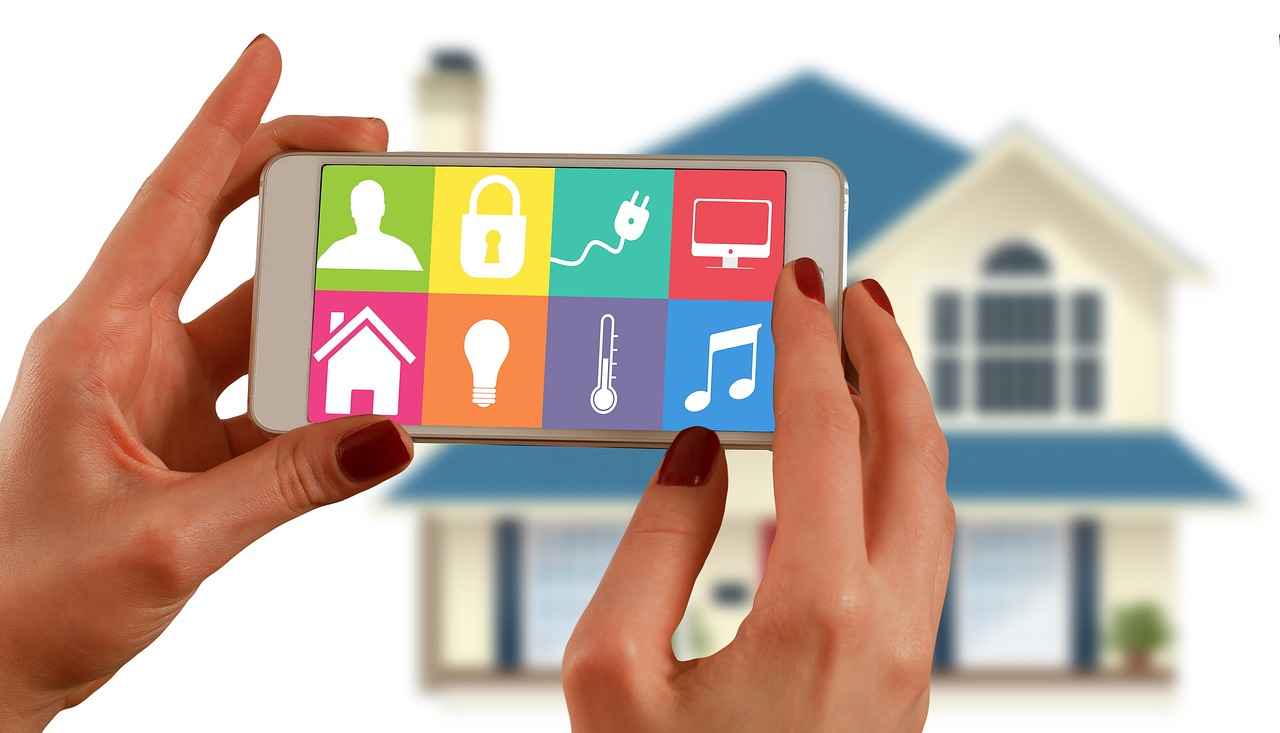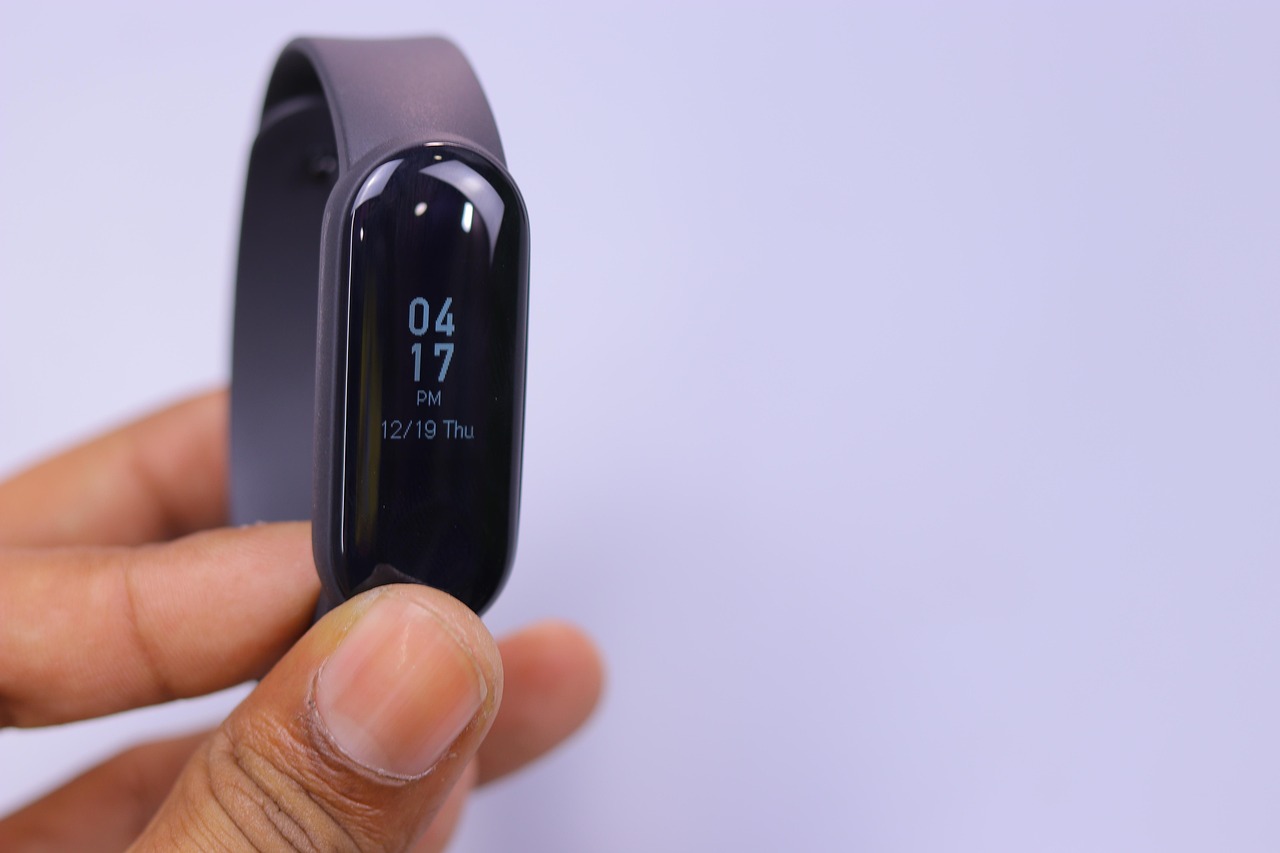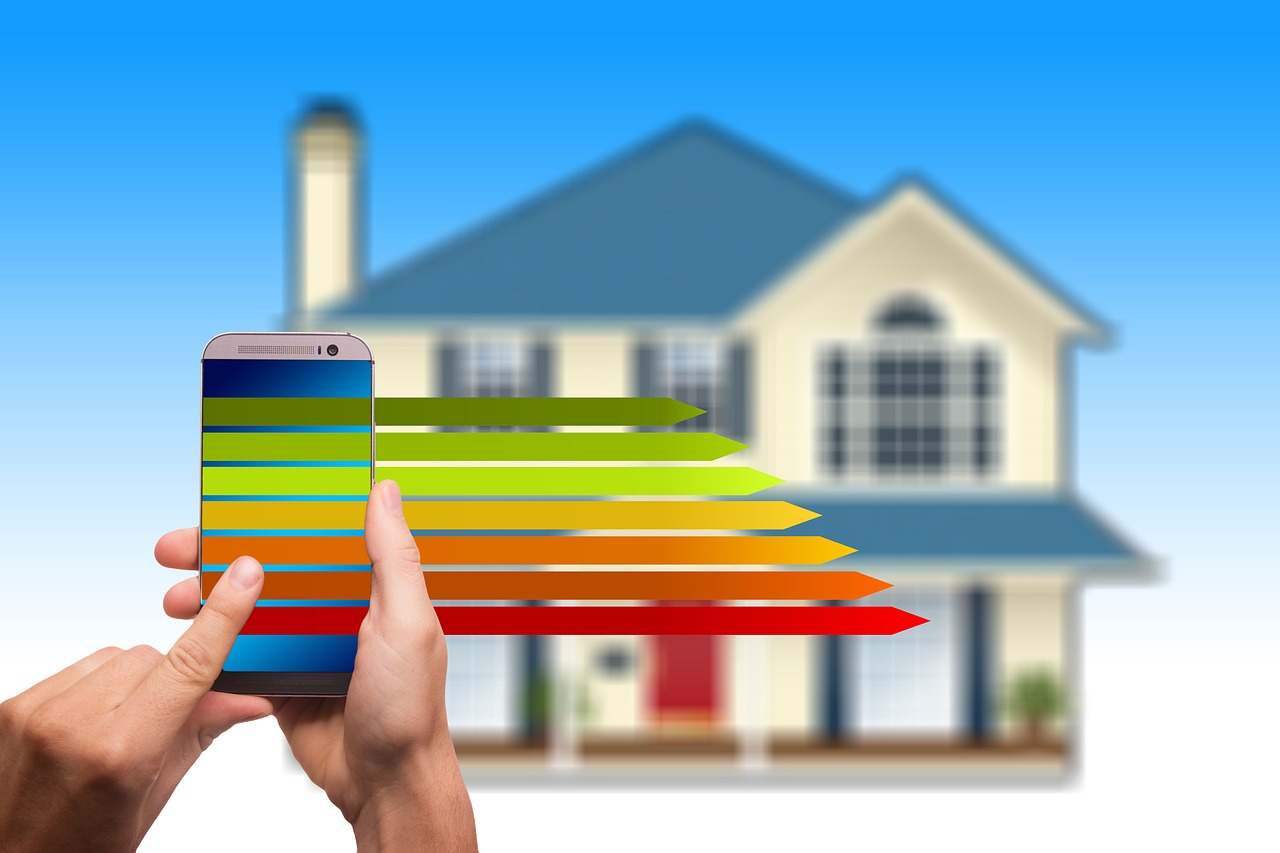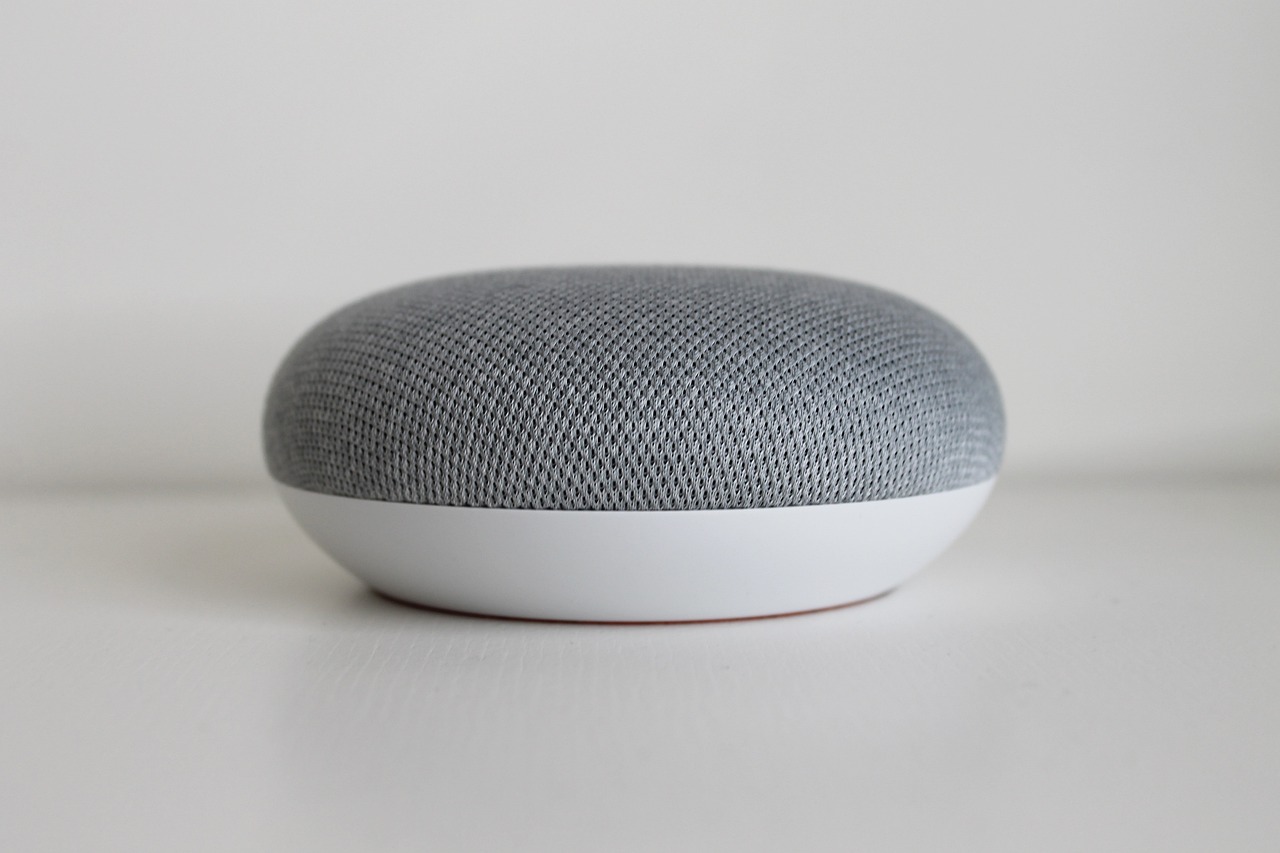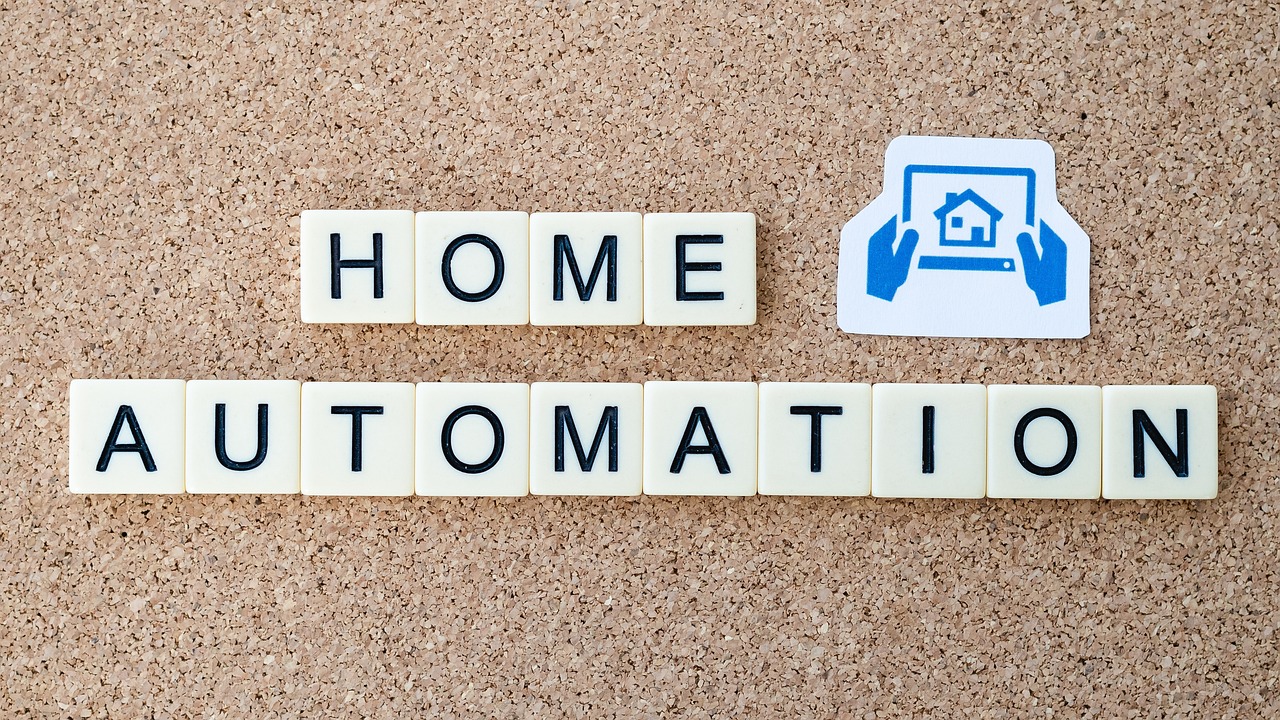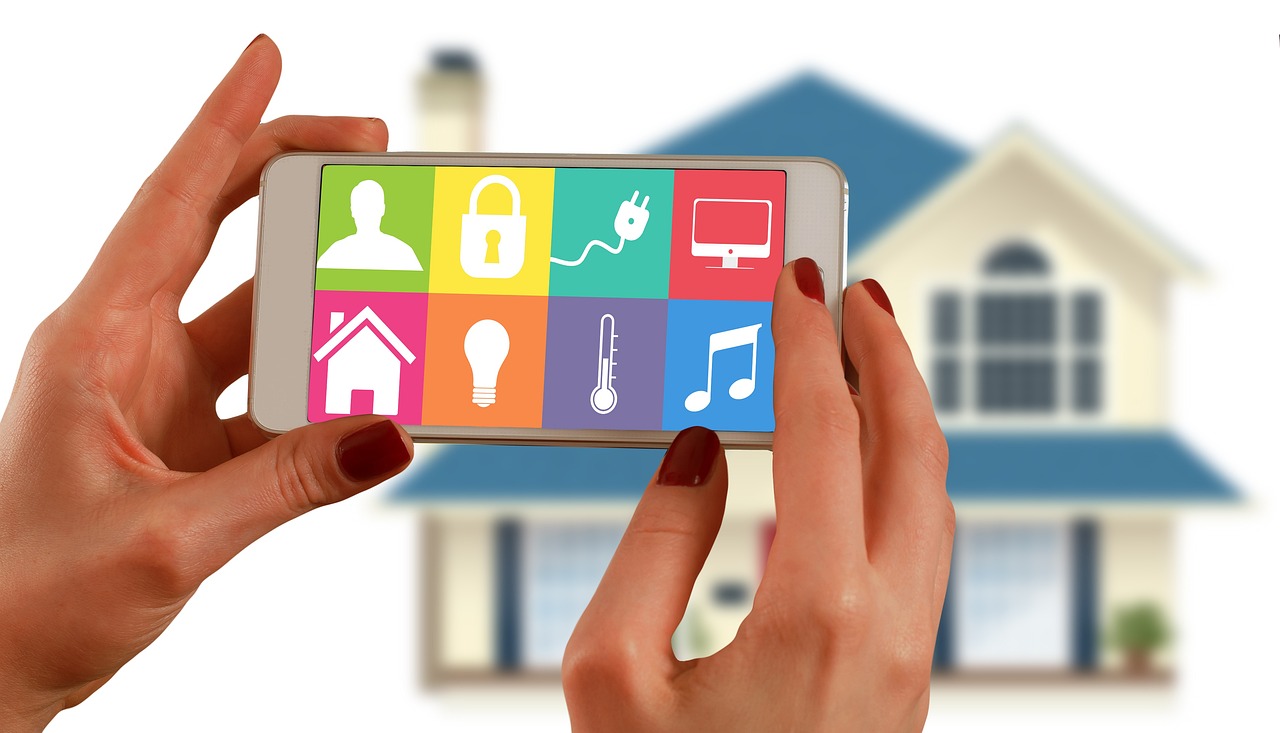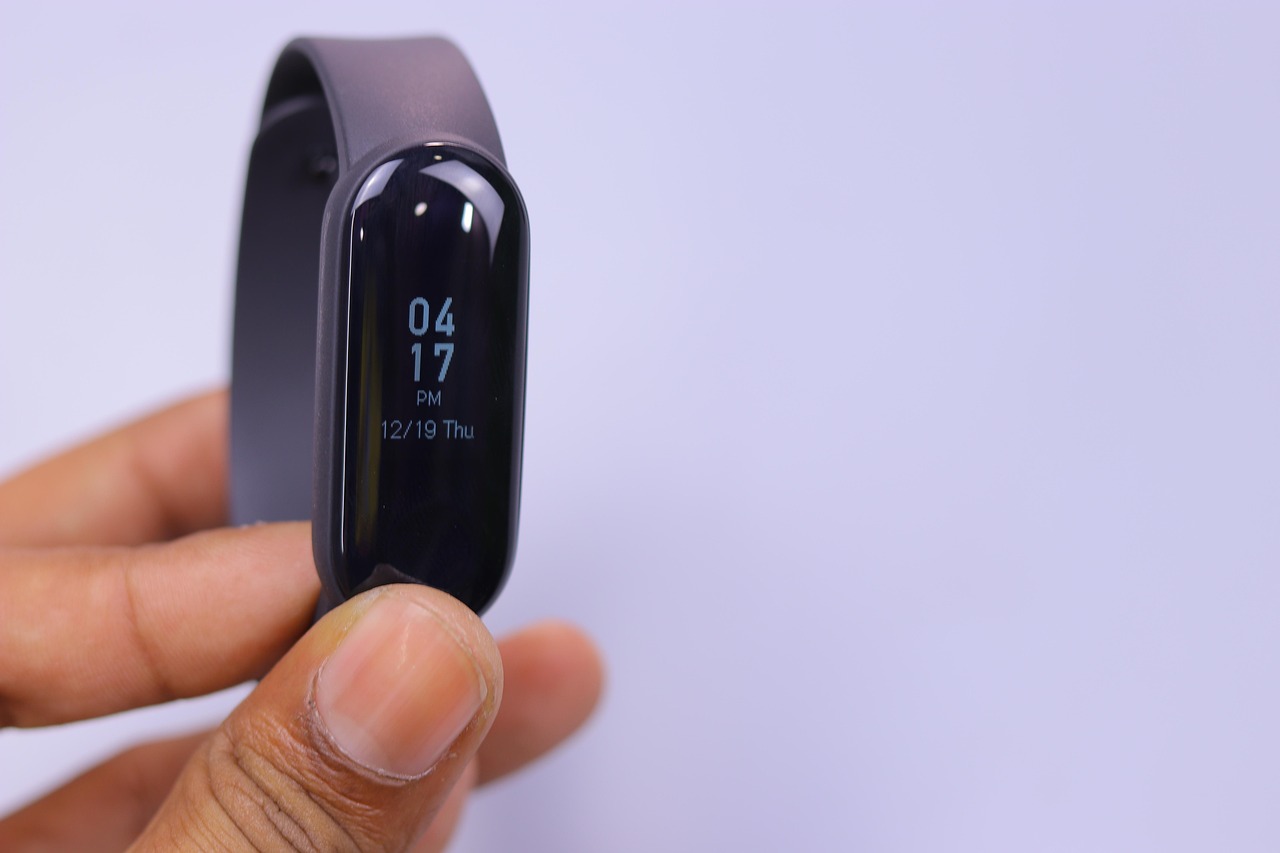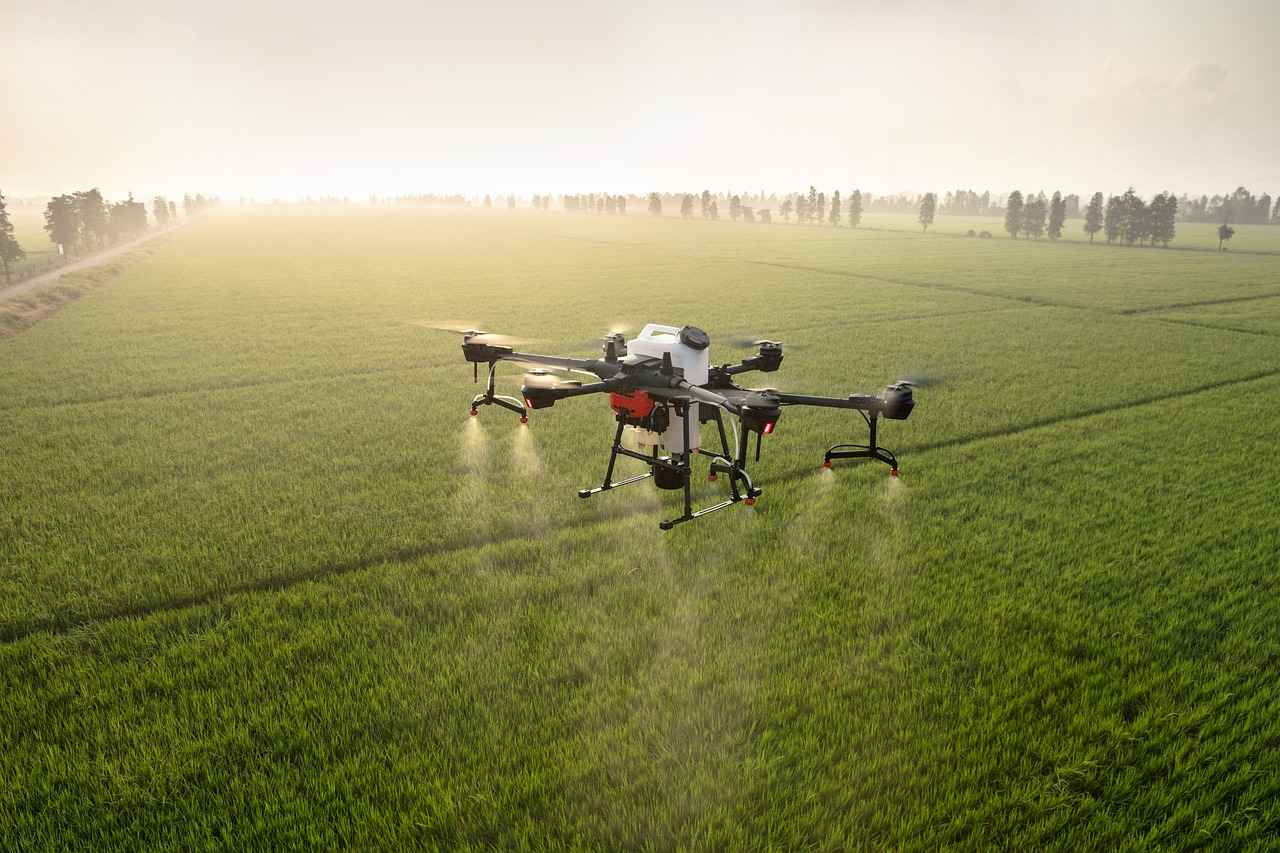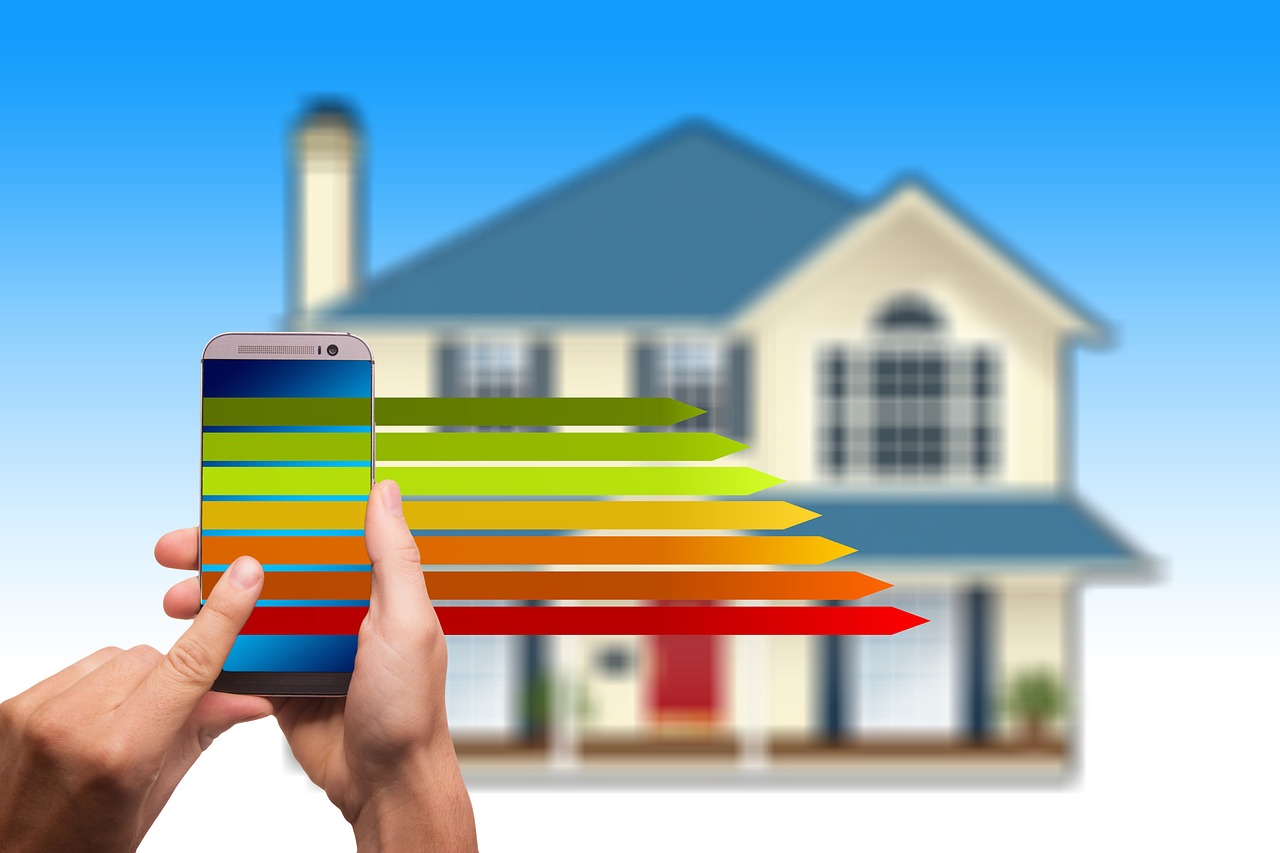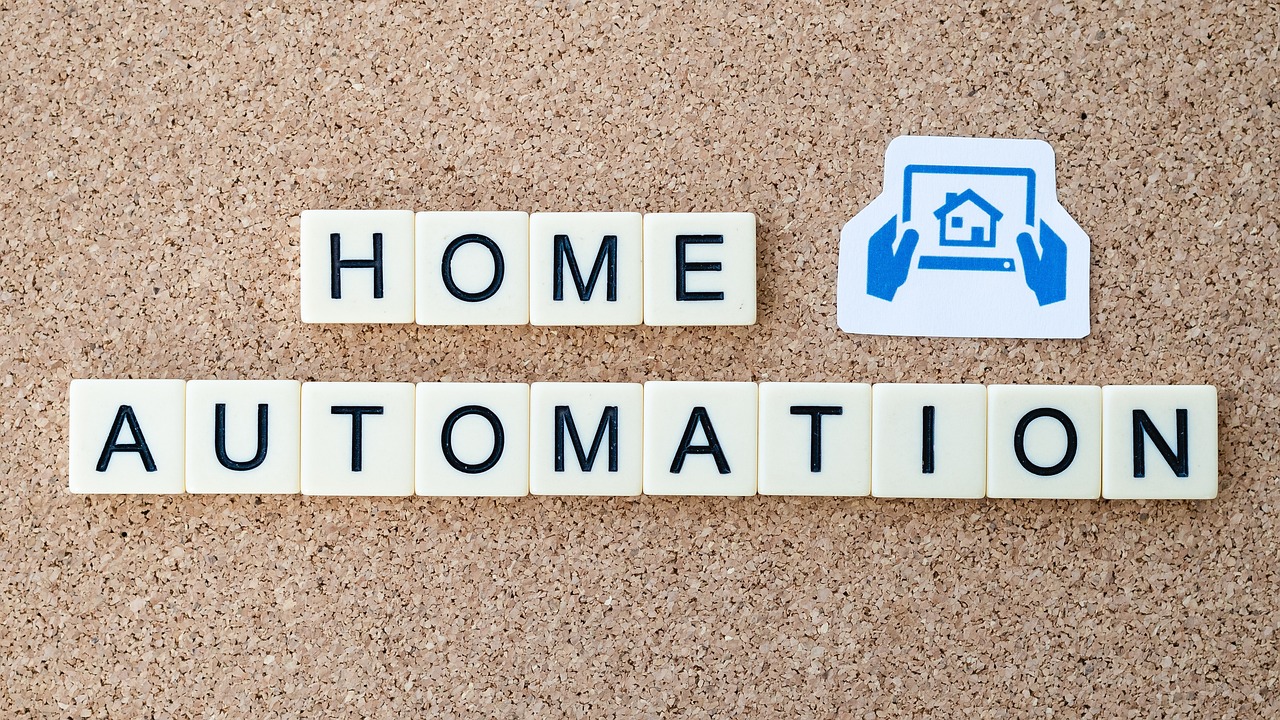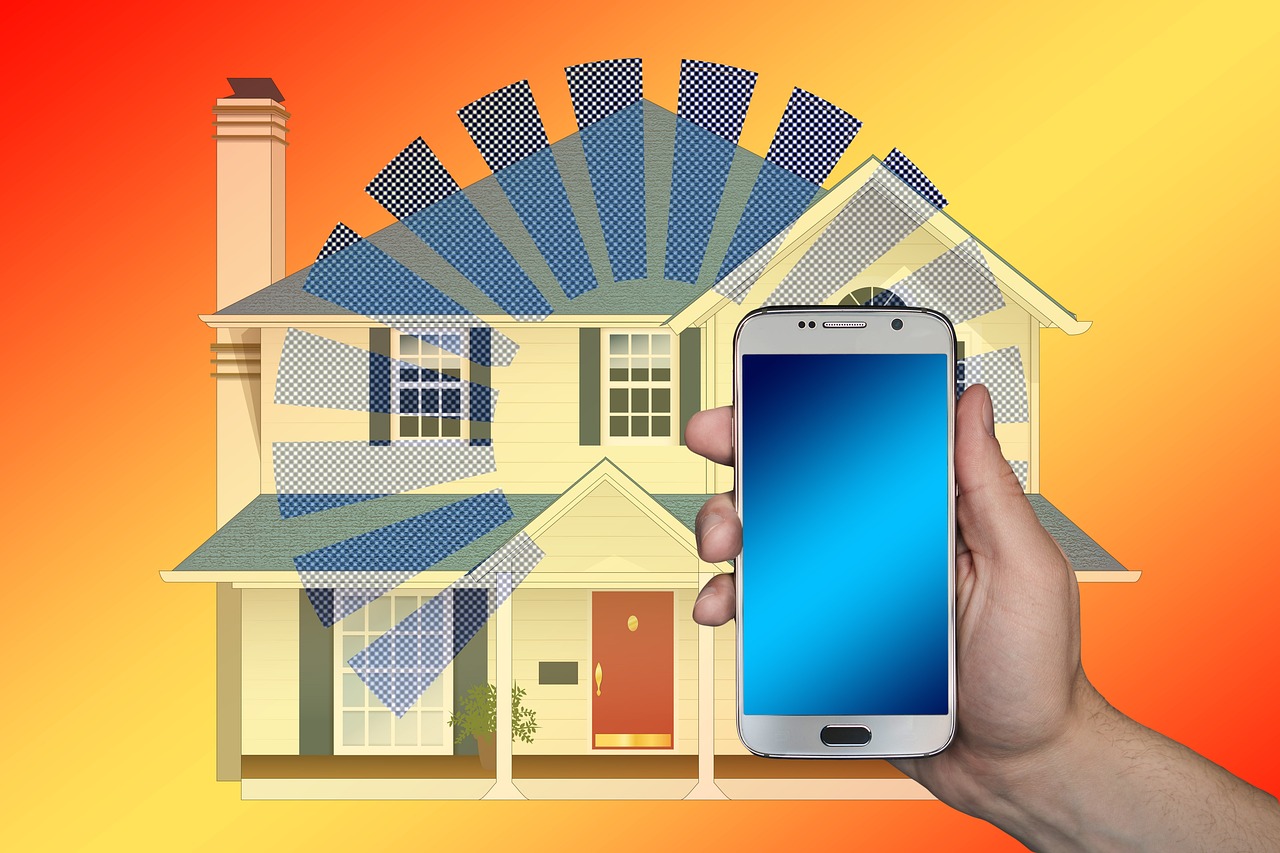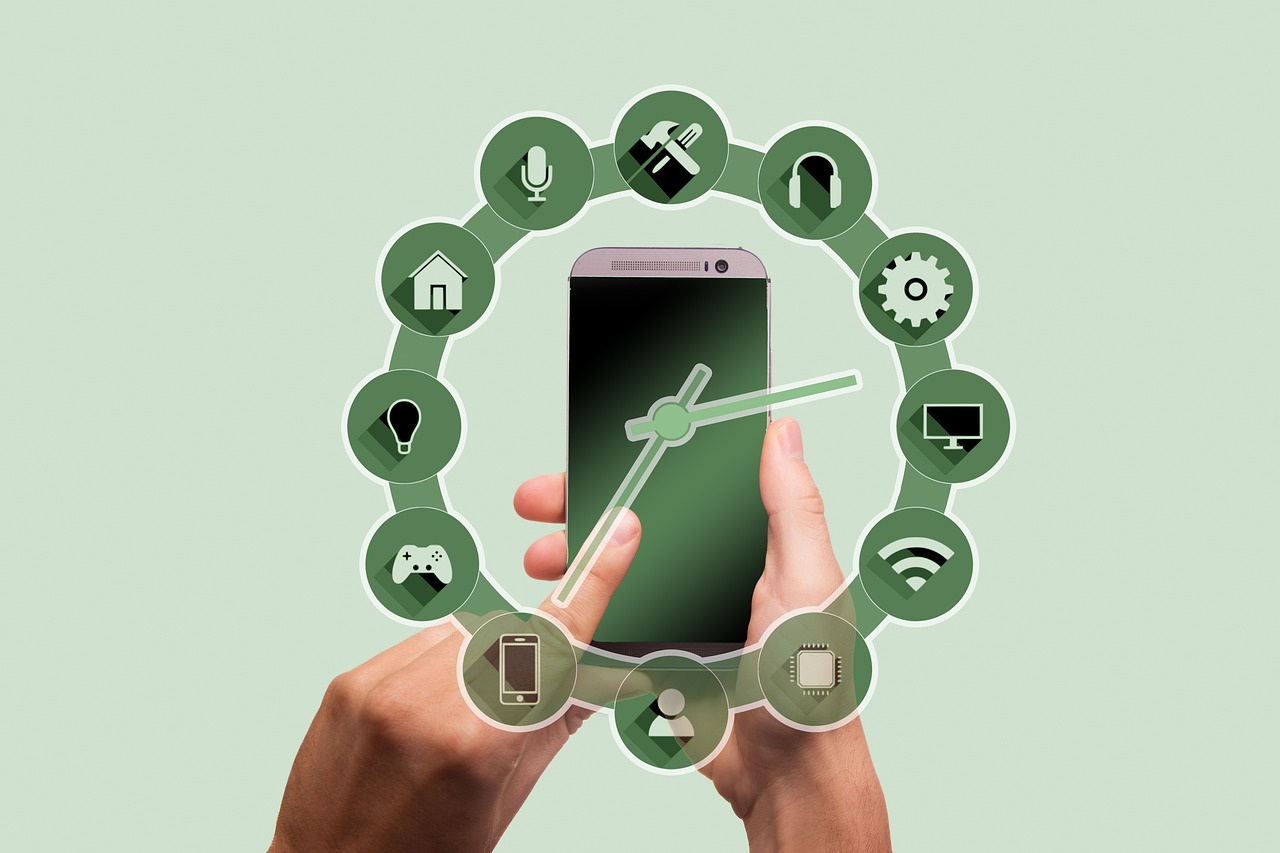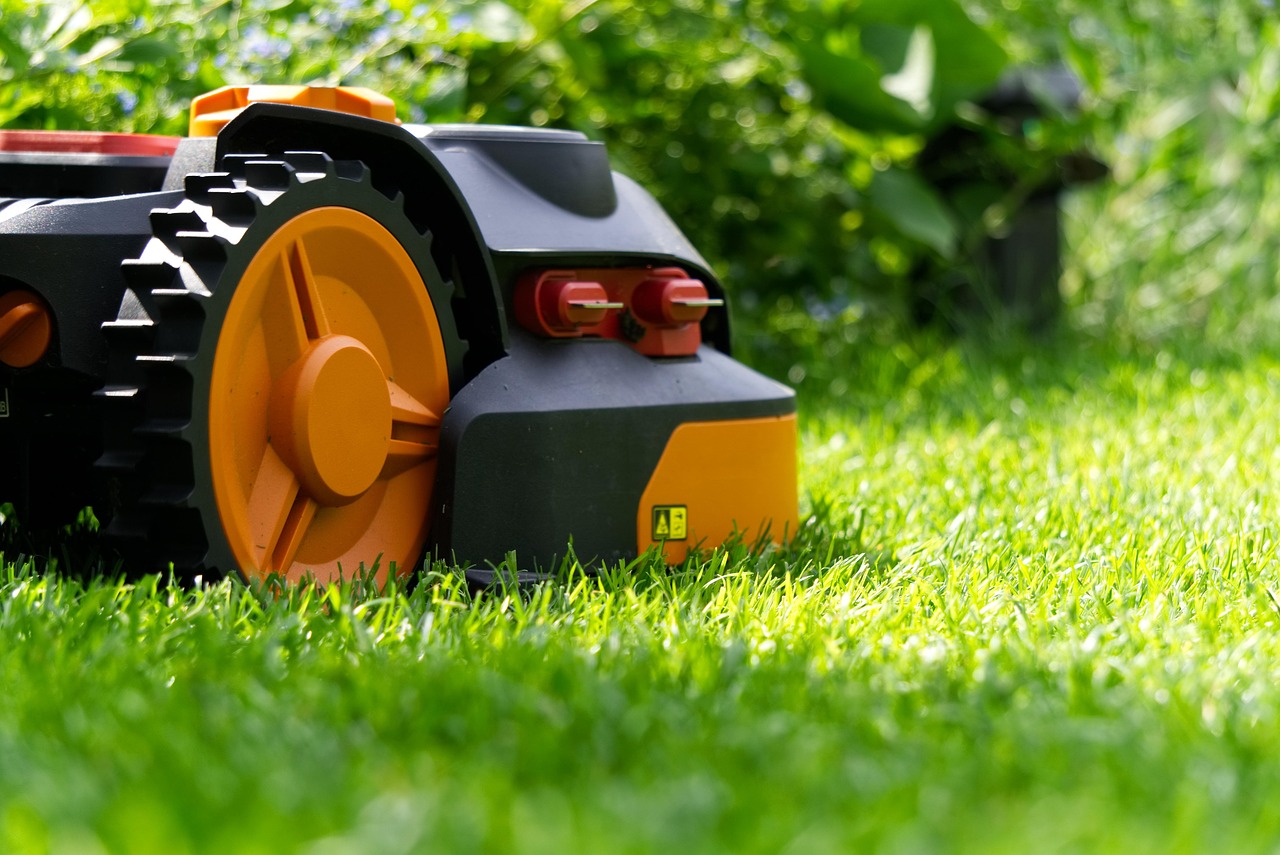This article delves into the essential smart home devices that significantly enhance convenience, security, and energy efficiency for new homeowners. With the increasing popularity of home automation, it is crucial to understand the features and benefits of various devices, as well as how to select the right products to suit your needs.
1. Smart Thermostats
Smart thermostats are vital for managing energy consumption effectively. They adapt to your daily routine, adjusting heating and cooling automatically to maintain comfort while minimizing energy costs. Some models even provide insights into energy usage patterns, helping homeowners make informed decisions.
2. Smart Security Cameras
These cameras are designed to offer peace of mind. With features like real-time monitoring, alerts, and remote access, they ensure your home remains safe. Understanding the difference between indoor and outdoor cameras is essential for comprehensive security coverage.
- Indoor Cameras: Typically include two-way audio and night vision.
- Outdoor Cameras: Built to withstand weather, offering higher resolutions and wider angles.
3. Smart Door Locks
Smart door locks enhance home security by allowing remote locking and unlocking. They eliminate the need for physical keys and provide customizable access codes for family and guests, ensuring convenience and safety.
4. Smart Lighting Solutions
These systems enable homeowners to customize lighting settings, adjusting brightness and color based on mood or time of day. Automated schedules can also simulate occupancy, deterring potential intruders.
5. Smart Plugs and Outlets
Smart plugs allow for remote control of appliances, enabling scheduled usage and energy monitoring. They contribute to an efficient home environment and are often compatible with voice assistants for added convenience.
6. Smart Home Hubs
Acting as a central control system, smart home hubs allow homeowners to manage multiple devices from different manufacturers through a single interface, simplifying home automation.
7. Smart Smoke and CO Detectors
These detectors provide enhanced safety features, including smartphone alerts and self-testing capabilities. They ensure that homeowners are informed of potential dangers, even when away from home.
8. Smart Speakers
Smart speakers serve as multifunctional devices, providing entertainment and home automation control. They allow users to access information and control devices via voice commands.
9. Smart Appliances
From refrigerators to washing machines, smart appliances offer advanced features that enhance convenience and energy efficiency, revolutionizing daily household tasks.
10. Smart Irrigation Systems
These systems optimize water usage for gardens, providing automated watering schedules and weather-based adjustments, promoting sustainability and resource conservation.
11. Smart Home Energy Management Systems
These systems provide insights into energy consumption, helping homeowners optimize usage and reduce costs through data-driven decisions.
12. Conclusion: Embracing Smart Home Technology
By integrating smart home technology, new homeowners can significantly enhance their living experience. Selecting the right devices tailored to your specific needs will create a connected, efficient, and secure home environment.
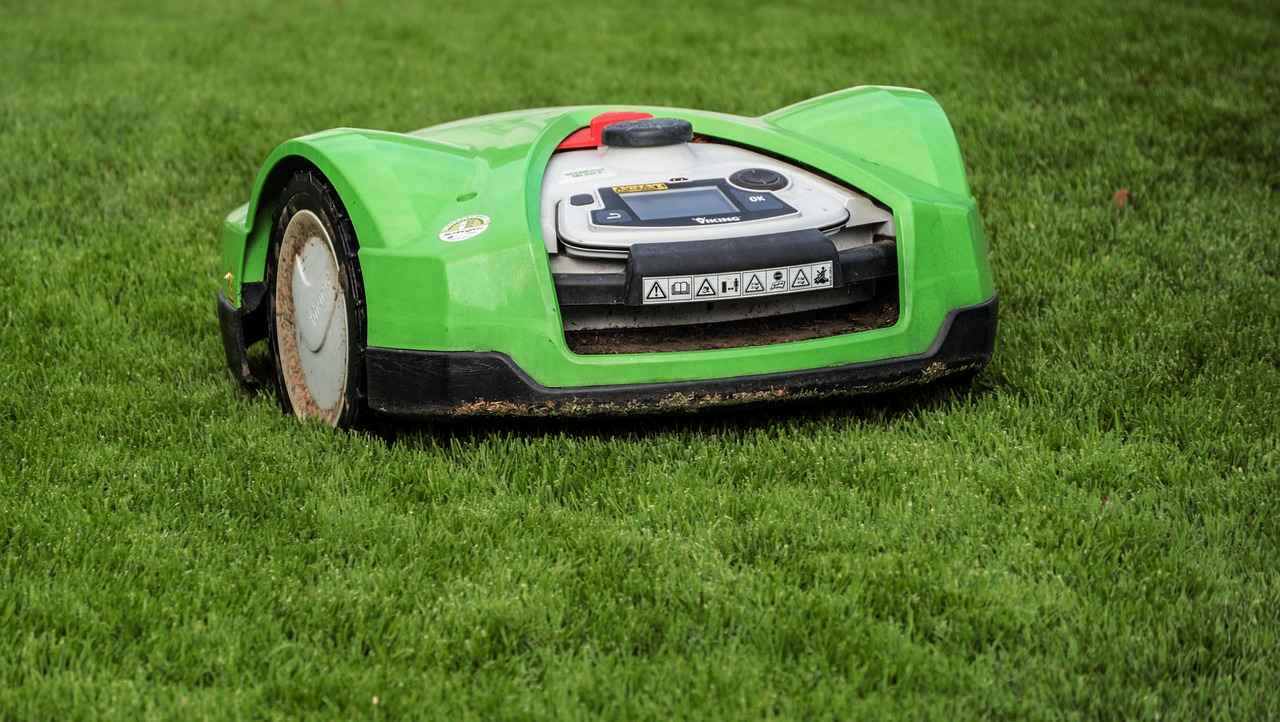
1. Smart Thermostats
Smart thermostats are revolutionizing the way homeowners manage their energy consumption. These innovative devices not only enhance comfort but also contribute significantly to energy efficiency and cost savings. By learning your daily routines and temperature preferences, smart thermostats can automatically adjust heating and cooling systems, ensuring that your home is always at the ideal temperature when you need it.
One of the key features of smart thermostats is their ability to learn from your habits. Over time, they gather data on your usage patterns and can predict when you are home or away. This means they can lower the temperature when you leave for work and warm things up before you return, effectively reducing energy waste. This feature not only enhances your comfort but also leads to noticeable savings on your energy bills.
Moreover, many smart thermostats come equipped with geofencing technology. This allows the thermostat to use your smartphone’s location to determine when you are nearing home, adjusting the temperature accordingly. This level of automation makes it easier for homeowners to maintain a comfortable living environment without having to remember to adjust the settings manually.
Another significant benefit is the ability to control your thermostat remotely through a smartphone app. This feature is especially useful for those who travel frequently or have unpredictable schedules. With just a few taps on your phone, you can adjust the temperature, ensuring that your home is always comfortable and energy-efficient.
In addition, smart thermostats often provide energy usage reports, offering insights into your consumption patterns. This data can be invaluable in identifying opportunities for further energy savings and understanding how different settings impact your bills.
In conclusion, investing in a smart thermostat is a smart choice for new homeowners. Not only does it enhance comfort and convenience, but it also promotes energy efficiency and cost savings, making it an essential addition to any modern home.

2. Smart Security Cameras
Smart Security Cameras have become an essential component of home security for new homeowners. These devices not only offer real-time monitoring but also provide a variety of features that enhance safety and convenience. With the rise in home automation, integrating smart security cameras into your home can bring peace of mind and a sense of control.
- Real-Time Monitoring: Homeowners can monitor their property from anywhere using a smartphone or tablet. This feature is particularly beneficial for those who travel frequently or have second homes.
- Alerts and Notifications: Smart security cameras send instant alerts to your device when motion is detected, ensuring that you are always aware of any unusual activity.
- Remote Access: Users can access live feeds and recorded footage remotely, allowing for quick responses to potential threats.
- Two-Way Audio: Many models come equipped with two-way audio, enabling homeowners to communicate with visitors or deter intruders.
Choosing between indoor and outdoor cameras is crucial for comprehensive security coverage. Indoor cameras are typically designed for monitoring pets and children, while outdoor cameras are built to withstand weather conditions and provide a wider field of view.
Another significant advantage of smart security cameras is their ability to integrate seamlessly with existing smart home systems. This allows homeowners to control multiple devices through a single app, enhancing overall convenience and security.
When selecting a smart security camera, consider factors such as resolution, field of view, night vision capabilities, and storage options. Additionally, check for compatibility with your current smart home ecosystem to ensure a smooth integration process.
In conclusion, investing in smart security cameras is a wise decision for new homeowners seeking to enhance their home security. With features like real-time monitoring and remote access, these devices provide not only safety but also convenience, making them a must-have in today’s smart homes.
2.1 Indoor vs. Outdoor Cameras
Indoor vs. Outdoor Cameras play a crucial role in enhancing the security of any home. Each type of camera is designed for specific environments and purposes, making it essential for homeowners to understand their differences to make informed decisions.
When considering home security solutions, homeowners often find themselves faced with the choice between indoor and outdoor cameras. Both serve unique functions, and understanding these can significantly impact the overall security of a property.
| Feature | Indoor Cameras | Outdoor Cameras |
|---|---|---|
| Design | Compact and aesthetically pleasing | Rugged and weather-resistant |
| Resolution | Standard resolution suitable for close monitoring | High resolution for capturing detailed images over larger areas |
| Features | Two-way audio, night vision, motion detection | Night vision, wide-angle lenses, motion detection |
| Installation | Easy installation, often wireless | Requires secure mounting, often wired for power |
- Indoor Cameras: Ideal for monitoring activities inside the home, such as keeping an eye on pets or children. They often come with features like two-way audio and night vision to enhance usability.
- Outdoor Cameras: Built to withstand various weather conditions, these cameras typically feature higher resolutions and wider angles to cover larger areas, ensuring comprehensive surveillance of the home’s exterior.
In conclusion, selecting the right type of camera is vital for ensuring optimal security coverage. By understanding the unique features and intended uses of indoor and outdoor cameras, homeowners can tailor their security systems to effectively meet their needs.
2.1.1 Features of Indoor Cameras
Features of Indoor Cameras are essential for homeowners looking to enhance their home security and monitor their living spaces effectively. These devices offer a range of functionalities that cater to various needs, ensuring peace of mind and convenience.
- Two-Way Audio: This feature allows homeowners to communicate with family members or pets through the camera. Whether you want to give commands to your dog or check in on your children, two-way audio provides a seamless communication channel.
- Night Vision: Indoor cameras are equipped with night vision capabilities, enabling them to capture clear video footage even in low-light conditions. This is crucial for monitoring your home during the night or in dimly lit areas.
- Motion Detection: Many indoor cameras come with advanced motion detection technology. This feature sends alerts to your smartphone when movement is detected, allowing you to respond promptly to any unusual activity.
- Live Streaming: Indoor cameras often support live streaming, enabling homeowners to view real-time footage from their devices. This is particularly useful for keeping an eye on pets or checking in on your home while you are away.
- Cloud Storage: Many models offer cloud storage options for recorded footage. This ensures that important video clips are saved securely and can be accessed later, providing a reliable way to review any incidents that may occur.
- Integration with Smart Home Systems: Indoor cameras can often integrate with other smart home devices, allowing for enhanced automation and control. For instance, you can set your camera to activate when your smart door lock is engaged.
In conclusion, indoor cameras serve as a vital component of modern home security systems. Their features not only help in monitoring your home but also provide reassurance that your loved ones and belongings are safe.
2.1.2 Features of Outdoor Cameras
Outdoor cameras play a crucial role in enhancing home security by providing comprehensive surveillance of your property. These devices are specifically engineered to endure various weather conditions, making them reliable guardians for your home. With advancements in technology, outdoor cameras now offer features that significantly improve safety and monitoring capabilities.
One of the most notable features of outdoor cameras is their high resolution. This ensures that the images captured are clear and detailed, allowing homeowners to identify faces, vehicle license plates, and other important details. Many models now support 4K resolution, providing sharp images even in low-light conditions.
Speaking of low-light conditions, night vision is another critical feature of outdoor cameras. Utilizing infrared technology, these cameras can capture clear images even in complete darkness. This means that your home remains monitored 24/7, providing peace of mind regardless of the time of day.
Additionally, outdoor cameras often come equipped with wider angles, allowing them to cover larger areas. This feature is particularly beneficial for homeowners with expansive yards or multiple entry points, as it minimizes blind spots and ensures comprehensive surveillance coverage. Some models even offer pan and tilt capabilities, enabling users to adjust the camera’s view remotely.
Moreover, many outdoor cameras include advanced features such as motion detection and real-time alerts. These functionalities notify homeowners of any suspicious activity, allowing for immediate action if necessary. Integration with smart home systems further enhances their usability, enabling users to access camera feeds from their smartphones or tablets.
In conclusion, outdoor cameras are an essential investment for any homeowner seeking to bolster their security. With features like high resolution, night vision, and wide-angle coverage, these devices provide reliable monitoring and peace of mind, making your home a safer place.
2.2 Integration with Smart Home Systems
Integration with Smart Home Systems has become a crucial aspect of modern home security solutions. Many smart security cameras are designed to seamlessly connect with existing smart home systems, providing users with a unified platform to manage their devices. This integration enhances convenience and offers a more streamlined experience for homeowners.
When choosing smart security cameras, it is essential to consider their compatibility with other smart home devices. For instance, many cameras can connect to smart door locks, lights, and alarm systems, allowing for comprehensive home monitoring and control. This means that homeowners can receive alerts on their smartphones whenever motion is detected, or they can set their lights to turn on automatically when the camera senses activity.
Moreover, the ability to control multiple devices from a single app cannot be overstated. Users can monitor live feeds from their cameras, lock doors, and adjust their home’s lighting—all from one interface. This not only simplifies the user experience but also enhances overall home security. For example, if a security camera detects suspicious activity, it can trigger the smart lights to flash or send alerts to the homeowner’s phone, ensuring prompt action can be taken.
Additionally, many smart security cameras offer voice control features that integrate with popular voice assistants like Amazon Alexa or Google Assistant. This allows homeowners to use simple voice commands to check camera feeds or activate security measures, making the system even more user-friendly.
In conclusion, the integration of smart security cameras with smart home systems provides an unparalleled level of convenience and security. Homeowners can enjoy peace of mind knowing that they have comprehensive control over their home environment, all while benefiting from advanced technology that simplifies their daily lives.
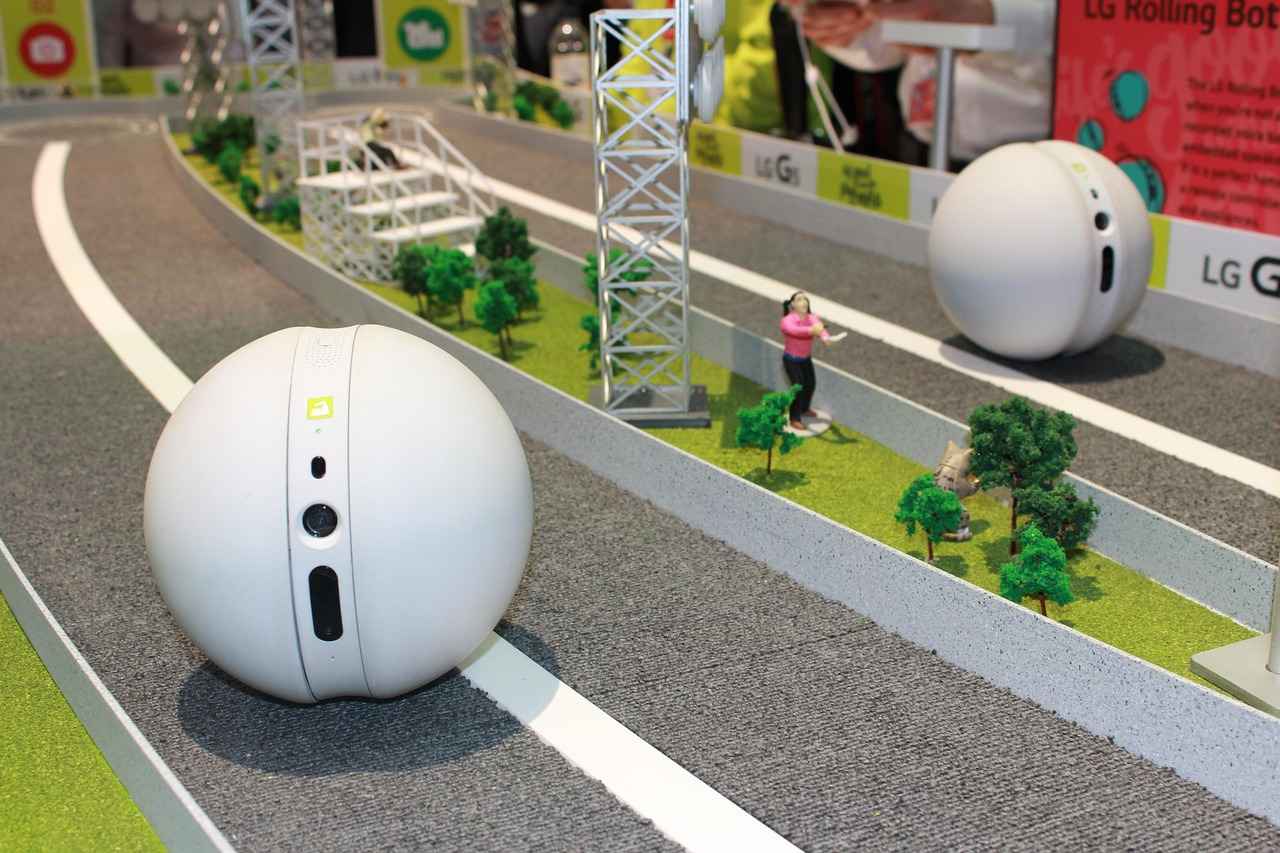
3. Smart Door Locks
Smart Door Locks have become an essential component of modern home security, combining advanced technology with user-friendly features to enhance both safety and convenience for homeowners.
These innovative devices allow homeowners to lock and unlock doors remotely, providing unparalleled access control from anywhere in the world. With the ability to manage access codes, homeowners can easily grant temporary entry to guests, service providers, or family members without the need for physical keys.
- Remote Access: Control your door locks from your smartphone, ensuring you can secure your home even when you’re not there.
- Access Codes: Create unique codes for different users, allowing you to monitor who enters and exits your home.
- Activity Monitoring: Receive real-time notifications and logs of who accessed your door and when, enhancing your home security.
Smart door locks not only enhance security but also offer significant convenience. With features like keyless entry, homeowners no longer need to worry about losing keys or being locked out. Furthermore, many smart locks integrate seamlessly with existing smart home systems, allowing for automation and control alongside other devices.
When selecting a smart door lock, consider factors such as compatibility with your smart home ecosystem, battery life, and the level of encryption used to protect your data. Look for locks that offer two-factor authentication for added security.
In conclusion, investing in a smart door lock is a wise decision for any homeowner looking to improve their home security and convenience. With the ability to monitor and control access, these devices provide peace of mind and enhance the overall safety of your living environment.
3.1 Keyless Entry Options
Keyless Entry Options have revolutionized the way we secure our homes, providing a seamless blend of convenience and enhanced security. These systems eliminate the need for traditional physical keys, allowing homeowners to grant access to family members and guests through customizable access codes.
One of the primary advantages of keyless entry systems is the ease of use they offer. Homeowners can simply enter a unique code on a keypad or use their smartphones to unlock doors, making it easier to manage access without fumbling for keys. This is particularly beneficial for busy families, as it allows for quick entry, especially when hands are full.
Enhanced Security is another significant benefit of keyless entry systems. With customizable access codes, homeowners can easily change codes whenever necessary, ensuring that access is tightly controlled. For instance, if a guest no longer needs access, the code can be deleted without needing to change locks. This feature not only enhances security but also provides peace of mind.
| Feature | Description |
|---|---|
| Remote Access | Allows homeowners to lock or unlock doors from anywhere using a smartphone app. |
| Temporary Codes | Generate temporary access codes for visitors or service personnel. |
| Activity Logs | Track who accessed the home and when, enhancing security monitoring. |
Moreover, many keyless entry systems can be integrated with existing smart home devices, allowing for a comprehensive security solution. For example, linking the door lock to a smart security camera can provide visual confirmation of who is entering your home.
In conclusion, keyless entry options not only enhance convenience and security but also offer flexibility in managing access to your home. As technology continues to evolve, these systems are becoming increasingly user-friendly and reliable, making them a must-have for modern homeowners.
3.2 Remote Locking and Unlocking
Remote locking and unlocking features have revolutionized home security, providing homeowners with unprecedented control over access to their properties. These innovative systems allow you to manage entry points from anywhere in the world, whether you’re at work, on vacation, or simply running errands. With just a few taps on your smartphone, you can lock or unlock your doors, ensuring that your home remains secure at all times.
One of the most significant advantages of remote locking and unlocking is the peace of mind it offers. Imagine being able to check the status of your doors while you’re away. If you forgot to lock up before leaving, you can quickly do so from your mobile device. This feature is particularly beneficial for families with children or elderly members, as it allows for easy monitoring and management of access.
Moreover, many smart locks come equipped with customizable access codes. This means you can provide temporary access to guests or service providers without needing to hand over a physical key. You can easily create and revoke access codes, ensuring that only authorized individuals can enter your home. This flexibility not only enhances security but also adds convenience to your daily life.
In addition, remote locking systems often integrate with other smart home devices, allowing for a comprehensive security solution. For instance, you can set your locks to automatically engage when your security system is activated or receive alerts when someone enters your home. This level of integration provides a seamless user experience, ensuring that your home is both safe and easy to manage.
In conclusion, the remote locking and unlocking features are an essential component of modern home security. By investing in smart locks, homeowners can enjoy enhanced security, convenience, and peace of mind, knowing that they have complete control over who can access their home.

4. Smart Lighting Solutions
Smart Lighting Solutions have revolutionized the way homeowners experience and manage lighting in their spaces. With the ability to customize settings, these systems not only enhance the ambiance but also contribute to energy efficiency, making them a popular choice among modern homeowners.
At the core of smart lighting solutions is the ability to control brightness, color, and schedules through a smartphone app or voice commands. This flexibility allows homeowners to create the perfect atmosphere for any occasion, whether it’s a cozy movie night or a lively dinner party.
- Personalized Ambiance: Homeowners can choose from millions of colors and adjust brightness levels to set the mood.
- Energy Efficiency: Smart bulbs consume less power than traditional incandescent bulbs, leading to reduced energy bills.
- Convenience: Automated schedules can turn lights on and off based on daily routines, enhancing security and saving energy.
Smart lighting solutions can seamlessly integrate with other smart home devices. For example, they can be programmed to work with smart thermostats and security systems, creating a cohesive smart home experience. This integration allows for features such as:
- Automated Lighting Scenes: Create specific lighting scenes that activate with a single command.
- Remote Access: Control your lights from anywhere, ensuring that your home always appears occupied.
When selecting a smart lighting system, consider factors such as compatibility with existing smart home devices, ease of installation, and user-friendly interfaces. Popular brands often offer a range of products, from smart bulbs to complete lighting fixtures, catering to various needs and budgets.
In conclusion, smart lighting solutions provide an excellent way to enhance the comfort and efficiency of your home. By investing in these systems, homeowners can enjoy customizable lighting that fits their lifestyle while also contributing to energy savings.
4.1 Benefits of Smart Bulbs
Benefits of Smart Bulbs
Smart bulbs have revolutionized the way we illuminate our homes, offering a range of benefits that cater to modern lifestyles. These innovative lighting solutions not only enhance the ambiance of a space but also contribute to energy efficiency and convenience. Below are some of the key advantages of integrating smart bulbs into your home.
- Energy Savings: Smart bulbs are designed to consume less energy compared to traditional incandescent bulbs. With their LED technology, they can last up to 25,000 hours, significantly reducing the frequency of replacements and lowering energy bills.
- Extended Lifespan: The longevity of smart bulbs means fewer replacements are needed over time, which is not only cost-effective but also environmentally friendly. This durability makes them a sustainable choice for homeowners.
- Voice Assistant Compatibility: Many smart bulbs are compatible with popular voice assistants such as Amazon Alexa, Google Assistant, and Apple HomeKit. This feature allows homeowners to control their lighting with simple voice commands, enhancing convenience.
- Customizable Lighting: Smart bulbs allow users to adjust brightness and color temperature, providing the ability to create the perfect atmosphere for any occasion. Whether it’s a cozy dinner or a vibrant party, the lighting can be tailored to suit your needs.
- Automated Schedules: Homeowners can set schedules for their smart bulbs to turn on or off at specific times. This feature not only adds convenience but also enhances security by simulating occupancy when away from home.
In conclusion, smart bulbs are a versatile and energy-efficient lighting solution that offers numerous benefits for modern homeowners. Their ability to integrate with smart home systems and voice assistants makes them a popular choice for those seeking convenience and control over their living environment.
4.2 Automated Lighting Schedules
Automated lighting schedules are increasingly becoming a vital component of modern smart home systems. By programming lights to turn on and off at specific times, homeowners can create the illusion of occupancy, which is crucial for enhancing home security. This feature not only deters potential intruders but also provides a sense of safety and peace of mind, especially when homeowners are away.
One of the primary advantages of automated lighting is its ability to simulate daily activities. For instance, lights can be set to turn on at dusk and off at dawn, mimicking the natural behavior of a resident. This simple yet effective strategy can significantly reduce the likelihood of break-ins, as it gives the impression that someone is home, even when the house is empty.
In addition to security benefits, automated lighting schedules offer convenience for homeowners. Instead of manually adjusting lights throughout the day, users can set their preferences once and let the system manage everything. This automation can be particularly useful for individuals with busy lifestyles or those who may forget to turn off lights when leaving the house.
Moreover, integrating automated lighting with other smart home devices can enhance its effectiveness. For example, when combined with smart security cameras, the lighting can respond to motion detected by the cameras, illuminating pathways or entry points automatically. This integration not only improves security but also increases the overall functionality of the smart home system.
In conclusion, automated lighting schedules are not just about convenience; they play a crucial role in enhancing home security. By simulating occupancy and integrating with other smart devices, homeowners can create a safer and more efficient living environment. As technology continues to evolve, the benefits of automated lighting will only increase, making it an essential feature for any smart home.
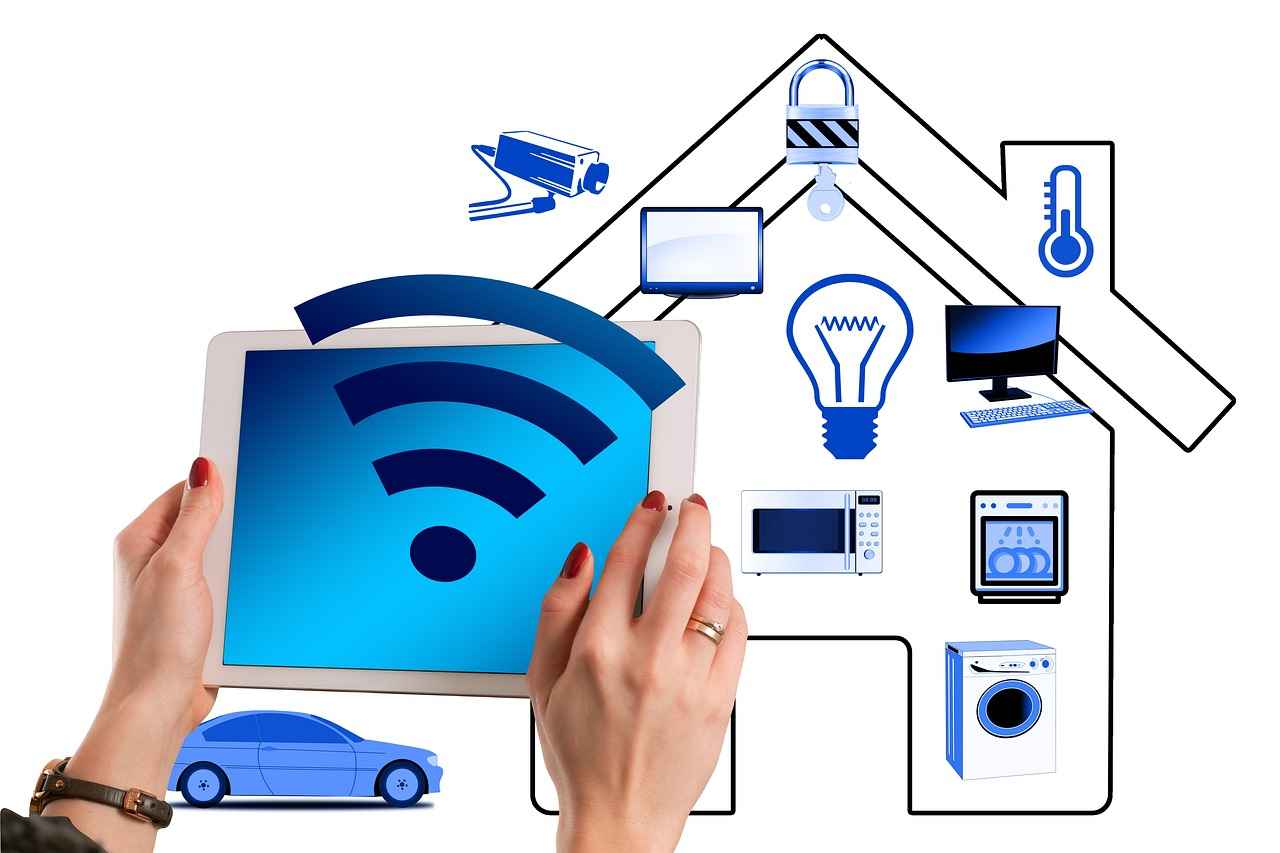
5. Smart Plugs and Outlets
Smart plugs and outlets are revolutionary devices that empower homeowners to take control of their home appliances with ease. By allowing users to manage their devices remotely through smartphones or tablets, these gadgets not only enhance convenience but also promote energy efficiency.
With smart plugs, homeowners can schedule appliance usage, ensuring that devices are only powered on when needed. This feature is particularly beneficial for high-energy appliances like heaters and air conditioners, which can be programmed to run during off-peak hours, leading to significant savings on electricity bills.
Moreover, smart plugs come equipped with energy monitoring capabilities. This allows users to track their energy consumption in real-time, helping them identify which devices are consuming the most power. By understanding these patterns, homeowners can make informed decisions to reduce energy waste and lower their utility costs.
Another advantage of smart plugs is their compatibility with voice assistants such as Amazon Alexa and Google Assistant. This integration enables hands-free control of devices, making it incredibly convenient for busy homeowners. Imagine simply saying, “Turn off the living room lamp,” and having it done instantly!
| Feature | Benefit |
|---|---|
| Remote Control | Manage appliances from anywhere |
| Scheduling | Save energy and reduce costs |
| Energy Monitoring | Identify energy hogs and optimize usage |
| Voice Assistant Compatibility | Hands-free convenience |
In conclusion, integrating smart plugs and outlets into your home can significantly enhance your lifestyle. They offer not only convenience and control but also substantial energy savings. As technology continues to evolve, these devices will play an increasingly important role in creating efficient and modern homes.
5.1 Energy Monitoring Features
Energy Monitoring Features are essential components of modern smart home technology, providing homeowners with valuable insights into their energy consumption patterns. By utilizing these features, individuals can effectively identify energy hogs—appliances and devices that consume excessive electricity—and take steps to optimize their usage, leading to significant cost savings.
One of the primary advantages of energy monitoring is the ability to track real-time energy usage. Homeowners can view how much energy each device consumes at any given moment, allowing them to make informed decisions about their energy habits. For instance, if a homeowner notices that their old refrigerator is using an unusually high amount of energy, they can consider replacing it with a more efficient model.
Additionally, energy monitoring systems often come equipped with historical data analysis. This feature allows homeowners to review their energy consumption over days, weeks, or months. By analyzing this data, they can identify trends and patterns in their energy use, such as peak usage times. Understanding these patterns can help homeowners adjust their habits, such as running dishwashers or laundry machines during off-peak hours to save on energy costs.
Moreover, many energy monitoring solutions offer alerts and notifications. For example, if a device is using more energy than usual, homeowners can receive instant notifications, prompting them to investigate potential issues, such as malfunctioning appliances or devices left on unnecessarily.
Incorporating energy monitoring features into a smart home setup not only promotes sustainability but also enhances overall home efficiency. By actively managing energy consumption, homeowners can reduce their carbon footprint while enjoying lower utility bills.
In conclusion, energy monitoring features empower homeowners with the tools they need to optimize their energy usage, identify inefficiencies, and ultimately save money. Embracing these technologies is a step towards a more efficient and environmentally friendly home.
5.2 Compatibility with Voice Assistants
In today’s fast-paced world, smart plugs have become an essential component of modern homes, primarily due to their compatibility with various voice assistants. This feature allows homeowners to control their devices effortlessly, enhancing convenience and streamlining daily routines.
Many smart plugs are designed to work seamlessly with popular voice assistants such as Amazon Alexa, Google Assistant, and Apple HomeKit. By integrating these voice-controlled systems, users can manage their household appliances through simple voice commands. For instance, saying “Turn on the living room lamp” can instantly activate the connected device, eliminating the need for manual switches.
Additionally, the hands-free control provided by voice assistants is particularly beneficial for busy homeowners. Whether you’re cooking, cleaning, or simply relaxing, you can adjust your devices without interrupting your activities. This level of convenience not only saves time but also enhances the overall smart home experience.
Moreover, voice assistant compatibility allows for automation and scheduling. Homeowners can set routines such as “Good morning” to trigger multiple actions—turning on lights, starting the coffee maker, and adjusting the thermostat—all with a single command. This integration not only simplifies daily tasks but also promotes energy efficiency by ensuring that devices are only active when needed.
When selecting a smart plug, it is crucial to check its compatibility with your preferred voice assistant. Many brands offer detailed specifications and user reviews, helping you make an informed choice. By investing in a smart plug that works with your voice assistant, you can create a more connected and efficient home environment.
In conclusion, the compatibility of smart plugs with voice assistants significantly enhances their functionality, making them a must-have for homeowners looking to embrace smart technology. This feature not only adds convenience but also contributes to a more energy-efficient lifestyle.

6. Smart Home Hubs
Smart Home Hubs are increasingly becoming an essential component of modern home automation. These hubs act as the central control systems for managing various smart devices from different manufacturers, allowing homeowners to streamline their home automation experience through a single interface. This not only simplifies the management of devices but also enhances the overall efficiency of the smart home ecosystem.
| Feature | Description |
|---|---|
| Device Compatibility | Smart home hubs support a wide range of devices, including smart lights, thermostats, security cameras, and more, ensuring seamless integration. |
| User-Friendly Interface | Most hubs come with intuitive apps that allow users to control their devices easily, set automation routines, and monitor their home from anywhere. |
| Automation Capabilities | Hubs enable homeowners to create customized automation routines, such as turning off lights when leaving home or adjusting the thermostat based on occupancy. |
The benefits of using a smart home hub extend beyond mere convenience. By centralizing control, homeowners can enhance the compatibility and communication between devices, resulting in a more cohesive and efficient smart home experience. For instance, a smart hub can enable a security camera to trigger outdoor lights upon detecting motion, providing an added layer of security.
When selecting a smart home hub, it’s vital to consider factors such as compatibility with existing devices, ease of use, and the specific features that align with your smart home goals. Popular smart home hubs include options like Amazon Echo Plus, Google Nest Hub, and Samsung SmartThings, each offering unique features tailored to different user needs.
In conclusion, investing in a smart home hub is a significant step towards creating a fully integrated smart home environment. By simplifying device management and enhancing automation, these hubs not only improve convenience but also contribute to a more efficient and secure living space.
6.1 Benefits of Using a Hub
In the rapidly evolving world of smart home technology, a smart home hub serves as the backbone of a connected living environment. This central control system enhances the compatibility and communication between various smart devices, leading to a more seamless user experience.
- Unified Control: A smart home hub allows users to manage multiple devices from different manufacturers through a single interface. This eliminates the hassle of switching between various apps, making home automation more intuitive.
- Enhanced Automation: With a hub, homeowners can create complex automation routines that involve multiple devices. For instance, you can set your lights to turn on when your smart door lock is unlocked, providing a welcoming environment as you enter your home.
- Improved Compatibility: Many smart devices might not work together natively due to different protocols. A smart home hub bridges these gaps, ensuring that devices communicate effectively, regardless of their brand or technology.
- Remote Access: Most smart home hubs come with mobile applications that allow users to control their devices remotely. Whether you’re at work or on vacation, you can monitor and manage your home’s systems from anywhere.
- Scalability: As your smart home evolves, adding new devices becomes effortless with a hub. Many hubs support a wide range of devices, ensuring that you can expand your system without compatibility issues.
In conclusion, integrating a smart home hub into your living space not only simplifies automation routines but also enhances the overall functionality and efficiency of your smart devices. By providing a unified platform for control and communication, a hub is an essential investment for anyone looking to optimize their smart home experience.
6.2 Popular Smart Home Hubs
Popular Smart Home Hubs play a crucial role in creating a seamless and efficient smart home ecosystem. These hubs serve as the central command for various smart devices, offering homeowners the ability to control everything from lighting to security systems through a single interface. Below, we explore some of the most popular smart home hubs available, highlighting their unique features and compatibility options.
| Smart Home Hub | Key Features | Compatibility |
|---|---|---|
| Amazon Echo Plus | Built-in Zigbee hub, Alexa voice control, multi-room audio | Compatible with a wide range of smart home devices including lights, locks, and cameras |
| Google Nest Hub | Voice control via Google Assistant, touch screen display, smart home dashboard | Works with thousands of smart devices from various manufacturers |
| Samsung SmartThings Hub | Supports Zigbee and Z-Wave, versatile automation options, mobile app control | Compatible with a vast array of smart devices from different brands |
| Apple HomePod mini | HomeKit support, Siri voice control, intercom feature | Works with HomeKit-enabled devices, ensuring a secure ecosystem |
Choosing the right smart home hub depends on your specific needs and existing devices. For instance, if you already have a collection of Amazon Echo devices, the Amazon Echo Plus might be the best choice due to its built-in Zigbee hub and Alexa compatibility. On the other hand, if you prefer a more visual interface, the Google Nest Hub offers a user-friendly touch screen to manage your devices easily.
Ultimately, the right smart home hub can enhance your home automation experience, making it more convenient and efficient. By selecting a hub that aligns with your preferences and existing devices, you can create a cohesive smart home environment that meets your lifestyle needs.
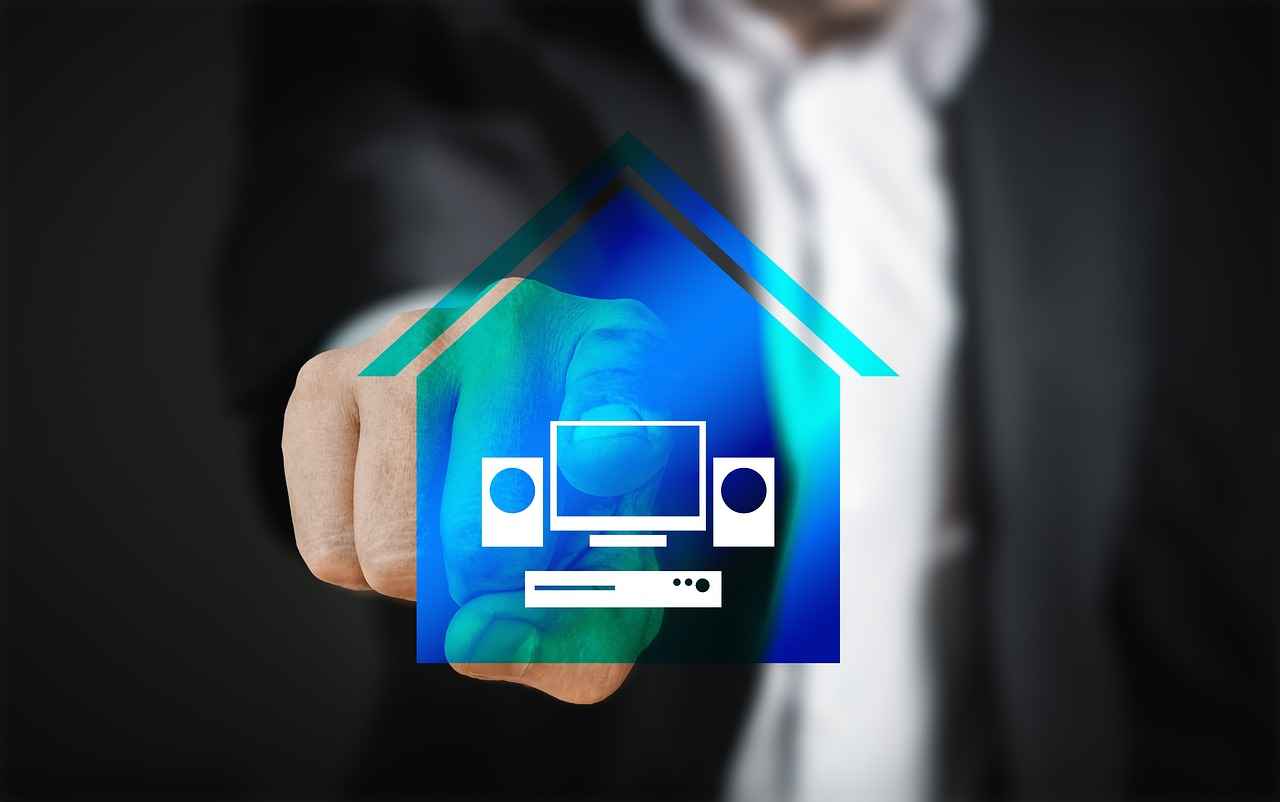
7. Smart Smoke and CO Detectors
Smart smoke and carbon monoxide detectors are essential devices for modern homes, combining advanced technology with crucial safety features. These detectors not only alert homeowners to potential dangers but also provide peace of mind through their innovative functionalities.
One of the standout features of smart smoke and CO detectors is their ability to send immediate alerts to smartphones. This means that whether you are at home or away, you will receive notifications if smoke or carbon monoxide is detected. This feature is especially vital for those who travel frequently or have second homes, ensuring that any potential emergencies can be addressed promptly.
In addition to smartphone alerts, these detectors often come equipped with self-testing capabilities. This means they regularly check their own functionality, notifying the homeowner if maintenance is required. This proactive approach helps prevent false alarms and ensures that the devices are always in working order.
Moreover, many smart smoke and CO detectors can integrate seamlessly with other smart home devices. For example, if smoke is detected, the system can automatically turn on lights, unlock doors, or even alert emergency services, creating a comprehensive safety net. This integration enhances the overall safety of the home and allows for a coordinated response in emergencies.
When selecting a smart smoke and CO detector, consider features such as battery life, compatibility with your existing smart home system, and whether it offers additional features like voice alerts or environmental monitoring. These factors can significantly impact the effectiveness and convenience of the device.
In conclusion, investing in smart smoke and carbon monoxide detectors is a wise choice for any homeowner. With their enhanced safety features, including smartphone alerts and self-testing capabilities, they provide a critical layer of protection against potential dangers, ensuring that you and your loved ones are always safe.
7.1 Importance of Smart Detectors
In today’s fast-paced world, ensuring the safety of your home and loved ones is more crucial than ever. Smart detectors play a pivotal role in enhancing home safety by providing advanced features that traditional detectors lack. These devices not only detect smoke and carbon monoxide but also offer immediate alerts directly to your smartphone, ensuring that you are informed of any potential dangers, even when you are away from home.
One of the key advantages of smart detectors is their ability to send real-time notifications. When smoke or carbon monoxide is detected, these devices will instantly alert you through your mobile device. This feature is particularly beneficial for homeowners who travel frequently or are away from home for extended periods. In an emergency, every second counts, and receiving timely alerts can make a significant difference.
- Remote Monitoring: Smart detectors allow you to monitor your home from anywhere, providing peace of mind whether you are at work, on vacation, or simply out running errands.
- Self-Testing Capabilities: Many smart detectors come with self-testing features that ensure they are functioning correctly, reducing the risk of malfunction during critical moments.
- Integration with Other Smart Devices: These detectors can often be integrated with other smart home systems, such as security cameras and smart speakers, creating a comprehensive safety network that enhances your home’s security.
Furthermore, smart detectors can provide valuable data insights, helping homeowners understand their environment better. For instance, they can track air quality and detect unusual changes, which can be crucial for health and safety. This data can also be shared with emergency services if necessary, facilitating a quicker response.
In conclusion, the importance of smart detectors cannot be overstated. They offer an additional layer of protection, ensuring that you are always connected to your home’s safety systems. By investing in smart detectors, you are not just purchasing a device; you are enhancing the overall safety and security of your living environment.
7.2 Integration with Other Smart Devices
Integration with Other Smart Devices plays a crucial role in enhancing the overall safety and efficiency of a smart home environment. This integration allows various devices to communicate seamlessly, creating a cohesive system that responds effectively to emergencies.
When smart smoke and carbon monoxide detectors are integrated with other smart devices, they can send automatic notifications to smartphones, smart speakers, or security systems. This immediate alert system ensures that homeowners are informed of potential dangers, even when they are not physically present at home. For instance, if a smoke detector senses smoke, it can trigger the security cameras to start recording, providing visual evidence of the situation.
Moreover, the integration of smart home devices enhances safety measures by enabling real-time communication between devices. For example, if a smart door lock detects unauthorized access, it can send an alert to the homeowner’s smartphone while simultaneously activating the security cameras. This interconnectedness not only improves response time but also provides homeowners with valuable data to assess the situation accurately.
In addition to emergency responses, this integration can enhance daily safety routines. Homeowners can set up scenarios where lights automatically turn on when someone enters the house, or the thermostat adjusts to a comfortable temperature as they arrive home. Such features not only improve convenience but also contribute to a safer living environment by ensuring that the home is well-lit and comfortable upon entry.
In conclusion, the integration of smart devices is essential for maximizing home safety. By allowing for automatic notifications and real-time responses to emergencies, these systems create a more secure and efficient living space for homeowners. Embracing this technology not only enhances safety measures but also offers peace of mind in today’s fast-paced world.

8. Smart Speakers
Smart speakers have become a staple in modern households, revolutionizing the way we interact with technology. These multifunctional devices not only provide entertainment but also serve as central hubs for home automation and information access. Their versatility makes them an invaluable addition to any smart home setup.
Smart speakers are designed to integrate seamlessly into your daily life. They utilize voice recognition technology, allowing users to control various smart devices, play music, and retrieve information simply by speaking. This hands-free operation enhances convenience, especially for busy homeowners.
- Voice Assistants: Most smart speakers come equipped with popular voice assistants like Alexa, Google Assistant, or Siri, enabling users to interact naturally.
- Home Automation Control: Smart speakers can control compatible devices such as lights, thermostats, and security systems, creating a cohesive smart home environment.
- Music and Entertainment: They provide access to streaming services, allowing users to enjoy their favorite tunes or podcasts effortlessly.
- Information Access: Users can ask questions and receive instant answers, making smart speakers a valuable tool for quick information retrieval.
Integrating smart speakers into your home offers numerous benefits:
- Enhanced Convenience: Voice commands simplify everyday tasks, making it easier to manage your home.
- Energy Efficiency: Control smart devices to optimize energy usage, reducing utility bills.
- Improved Connectivity: Smart speakers can connect with a wide range of devices, allowing for a more integrated and efficient home automation experience.
When selecting a smart speaker, consider factors such as compatibility with existing smart home devices, sound quality, and the features that matter most to you. Researching user reviews and expert opinions can also guide you in making an informed decision.
In conclusion, smart speakers are not just gadgets; they are essential tools that enhance the functionality of a smart home. By embracing this technology, homeowners can enjoy a more connected, efficient, and enjoyable living environment.
8.1 Voice Assistant Features
Voice assistants integrated into smart speakers have revolutionized the way homeowners interact with their living spaces. These innovative devices serve as a central hub for managing various smart home technologies, enhancing both convenience and accessibility in daily life.
With the ability to execute voice commands, users can effortlessly control a wide array of smart devices, ranging from lighting systems to thermostats. This hands-free operation allows homeowners to multitask efficiently, whether they are cooking, cleaning, or simply relaxing. For instance, a simple command like “turn on the living room lights” can instantly brighten the space without the need for physical switches.
Moreover, voice assistants can play music, provide weather updates, set reminders, and answer questions, making them an invaluable source of information and entertainment. This feature is particularly appealing to busy families who value time-saving solutions. Imagine asking your voice assistant to play your favorite playlist while you prepare dinner, creating a seamless and enjoyable atmosphere.
Additionally, the integration of voice assistants with other smart home devices enhances security. Homeowners can check their security cameras or lock doors using only their voice, ensuring peace of mind when away from home. This level of control not only simplifies daily tasks but also contributes to a safer living environment.
In conclusion, the voice assistant features of smart speakers significantly elevate the smart home experience. By allowing homeowners to control devices, access information, and enjoy entertainment through simple voice commands, these devices embody the essence of modern convenience. As technology continues to evolve, the role of voice assistants in enhancing home automation will undoubtedly expand, making them an essential component of any smart home.
8.2 Multi-Room Audio Capabilities
Multi-room audio capabilities have revolutionized the way homeowners experience music and sound throughout their living spaces. By enabling synchronized playback across multiple rooms, these systems create an immersive audio experience that enhances entertainment, gatherings, and daily living.
Imagine hosting a dinner party where your favorite playlist seamlessly flows from the kitchen to the dining area, or enjoying a relaxing evening with soft tunes echoing throughout the house. This level of convenience and enjoyment is made possible by modern multi-room audio systems, which can be easily controlled via smartphone apps or voice commands.
One of the primary benefits of multi-room audio is its flexibility. Homeowners can choose to play the same music in every room or select different tracks for each space, catering to various moods and activities. This flexibility is particularly valuable in larger homes, where sound can be distributed evenly, ensuring that no area is left out of the auditory experience.
Moreover, many multi-room audio systems are designed to integrate seamlessly with existing smart home devices. This integration allows users to control not just music, but also lighting and temperature settings, all from a single interface. For example, you can set the perfect ambiance for a movie night by dimming the lights and playing your favorite film score across all speakers.
When selecting a multi-room audio system, consider factors such as sound quality, ease of installation, and compatibility with other smart devices. Popular options include systems from brands like Sonos, Bose, and Google Nest, each offering unique features tailored to different preferences.
In conclusion, multi-room audio capabilities are a must-have for homeowners looking to enhance their living space with rich, synchronized sound. By investing in a quality system, you can transform your home into a vibrant audio environment that caters to all your entertainment needs.
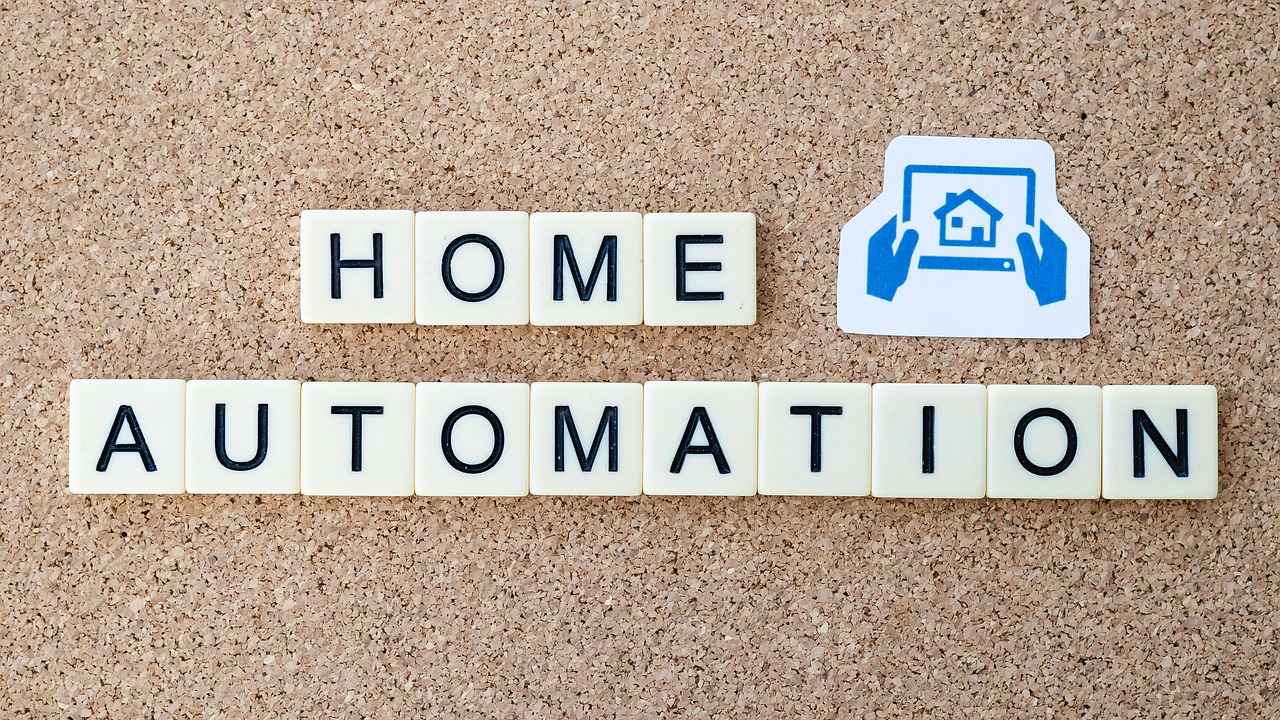
9. Smart Appliances
Smart Appliances are transforming the way we manage our household tasks, making them more efficient and convenient. These innovative devices, including smart refrigerators and smart washing machines, are equipped with advanced features that not only enhance user experience but also promote energy efficiency.
With the integration of IoT (Internet of Things) technology, smart appliances can connect to your home network, allowing for remote control and monitoring. This connectivity provides homeowners with the ability to manage their devices from anywhere, ensuring that tasks like laundry and meal prep can be efficiently organized.
| Smart Appliance | Key Features | Benefits |
|---|---|---|
| Smart Refrigerator | Inventory tracking, recipe suggestions, remote temperature control | Efficient meal planning, reduced food waste |
| Smart Washing Machine | Remote monitoring, customizable wash cycles, energy-efficient settings | Convenience, time-saving, reduced energy costs |
9.1 Benefits of Smart Refrigerators
Smart refrigerators come equipped with features like inventory tracking, which helps users keep tabs on what food items are available. This can lead to better meal planning and less food waste. Additionally, many smart fridges offer recipe suggestions based on the ingredients you have, making cooking more accessible and enjoyable.
9.2 Smart Washing Machines and Dryers
Smart washing machines and dryers allow for remote control and monitoring, which means you can start or stop a load of laundry from your smartphone. This feature is particularly useful for busy homeowners who want to ensure that laundry is done efficiently, even when they are not at home. Moreover, these appliances often include energy-saving modes that help reduce electricity consumption.
In conclusion, investing in smart appliances not only simplifies daily chores but also contributes to a more sustainable lifestyle. By leveraging technology, homeowners can enjoy greater convenience and efficiency in their everyday lives.
9.1 Benefits of Smart Refrigerators
Benefits of Smart Refrigerators
Smart refrigerators have revolutionized the way we manage our kitchens and grocery shopping. These advanced appliances are equipped with a variety of features that not only enhance convenience but also promote efficiency in meal planning and food management.
- Inventory Tracking: One of the standout features of smart refrigerators is their ability to track the contents of your fridge. With built-in cameras and inventory management systems, you can easily see what items you have, reducing food waste and making grocery shopping more efficient.
- Recipe Suggestions: Smart refrigerators often come with integrated recipe apps that suggest meals based on the ingredients you have on hand. This feature encourages creativity in the kitchen and helps you utilize ingredients before they expire.
- Remote Temperature Control: Maintaining the right temperature for your food is crucial for freshness. With remote temperature control, you can adjust settings from your smartphone, ensuring optimal conditions for your perishables, even when you’re away from home.
- Energy Efficiency: Many smart refrigerators are designed with energy-saving features that help reduce electricity consumption. This not only lowers your utility bills but also contributes to a more sustainable household.
- Connectivity: Smart refrigerators can connect with other smart home devices, allowing you to integrate your kitchen with your overall smart home ecosystem. This connectivity enables you to manage your home more seamlessly.
In conclusion, investing in a smart refrigerator offers numerous benefits that streamline meal preparation and grocery management. By leveraging technology, homeowners can enjoy a more organized and efficient kitchen experience.
9.2 Smart Washing Machines and Dryers
Smart Washing Machines and Dryers have revolutionized the way we approach laundry, providing homeowners with unparalleled convenience and efficiency. These innovative appliances are equipped with advanced technology that allows for remote monitoring and control, ensuring that laundry tasks are completed seamlessly, even when you are not at home.
One of the standout features of smart washing machines and dryers is their ability to connect to your home Wi-Fi network. This connectivity enables users to manage their laundry through a smartphone app, providing real-time updates on wash cycles, drying times, and even maintenance alerts. Imagine being able to start a wash cycle while you’re at work or receive a notification when your laundry is done, all from the convenience of your smartphone!
Additionally, these smart appliances often come equipped with energy-efficient settings that help reduce water and electricity consumption. By optimizing energy use, homeowners can not only save on utility bills but also contribute to environmental sustainability. Many models also feature self-diagnosis capabilities, allowing for quick troubleshooting and reducing the need for professional repairs.
Another significant advantage is the integration of AI technology. Some smart washers and dryers can learn your laundry habits and suggest optimal wash settings based on fabric types and soil levels. This means you can achieve the best cleaning results without having to manually adjust settings each time.
In conclusion, investing in smart washing machines and dryers can enhance your laundry experience, making it more efficient and convenient. With features like remote access, energy efficiency, and smart technology, these appliances are a must-have for any modern homeowner looking to simplify their household chores.
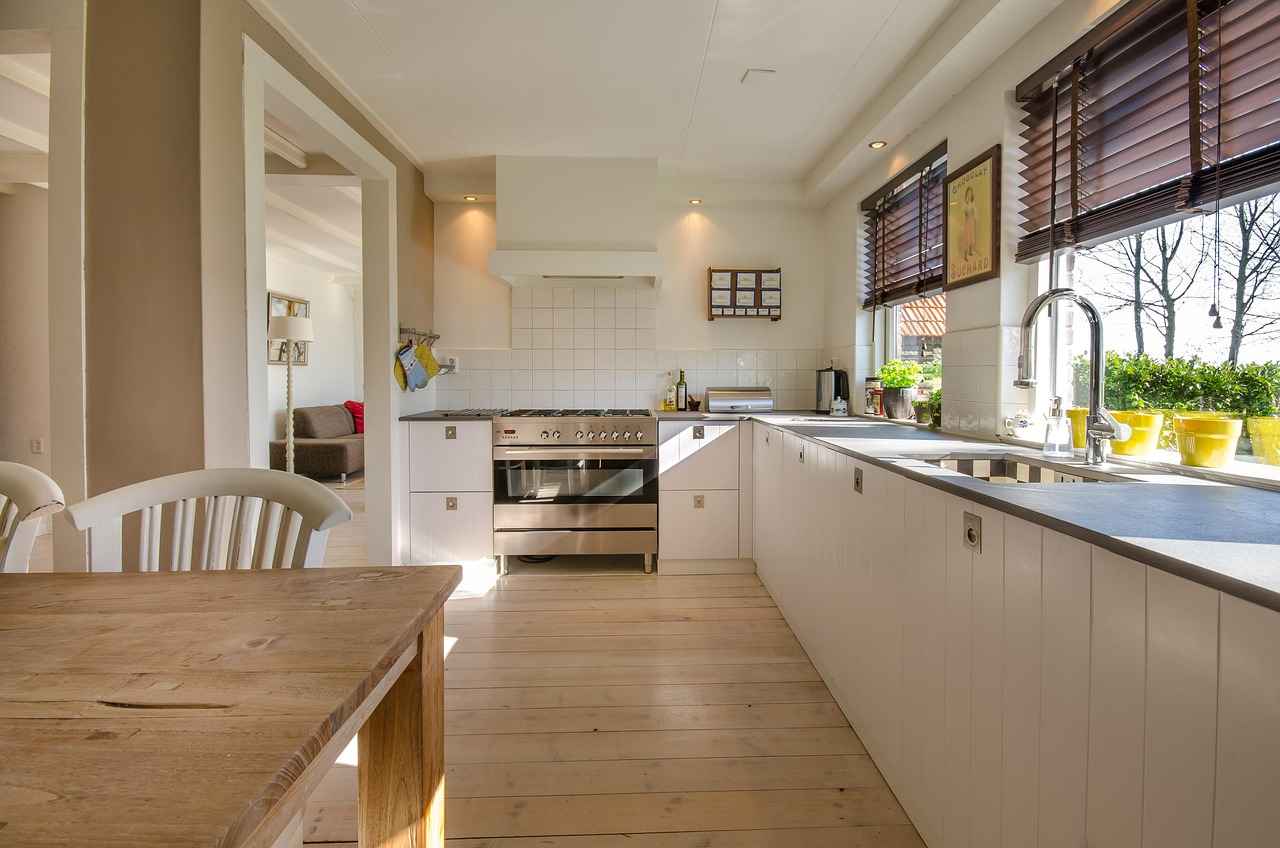
10. Smart Irrigation Systems
Smart Irrigation Systems are revolutionizing the way we manage water resources for gardens and lawns. By utilizing advanced technology, these systems not only enhance the aesthetics of outdoor spaces but also promote sustainability and conservation.
These systems offer automated watering schedules that adjust according to the specific needs of your plants, ensuring they receive the right amount of water without waste. This is particularly beneficial in regions where water scarcity is a concern. With features like weather-based adjustments, smart irrigation systems can modify watering times and durations based on current weather conditions, such as rainfall or humidity levels, which significantly reduces the risk of overwatering.
- Water Conservation: By optimizing water usage, smart irrigation systems help conserve this precious resource, making them an eco-friendly choice.
- Cost Savings: Reducing water waste translates to lower utility bills, making smart irrigation a financially sound investment.
- Healthier Plants: With precise watering, plants receive consistent moisture, promoting healthier growth and reducing the risk of disease.
One of the standout features of smart irrigation systems is their ability to integrate with local weather data. This integration allows the system to automatically adjust watering schedules based on real-time weather conditions. For instance, if rain is forecasted, the system can skip scheduled watering, ensuring that your garden is not overwatered.
When selecting a smart irrigation system, consider factors such as the size of your garden, the types of plants you have, and your local climate. Look for systems that offer flexibility and customization, allowing you to create tailored watering schedules that suit your specific needs.
In conclusion, investing in a smart irrigation system not only enhances the beauty of your outdoor spaces but also contributes to a sustainable future. By optimizing water usage and adapting to environmental conditions, these systems are a must-have for modern homeowners who value efficiency and conservation.
10.1 Benefits of Smart Irrigation
Smart irrigation systems are revolutionizing the way we manage water resources in our gardens and landscapes. These innovative technologies not only promote sustainability but also ensure that our plants receive the optimal amount of moisture they require. Here are some key benefits:
- Water Conservation: One of the most significant advantages of smart irrigation is its ability to conserve water. By utilizing sensors and weather data, these systems can adjust watering schedules based on real-time conditions, preventing overwatering and reducing waste.
- Healthier Plants: Consistent and appropriate watering is crucial for plant health. Smart irrigation systems deliver the right amount of water at the right time, helping to maintain lush and vibrant landscapes.
- Cost Savings: By optimizing water usage, homeowners can see a reduction in their water bills. Smart irrigation systems can significantly cut down on unnecessary water expenses while promoting a healthy garden.
- Convenience: Many smart irrigation systems can be controlled remotely via smartphone apps, allowing homeowners to manage their watering schedules from anywhere. This convenience is particularly beneficial for those with busy lifestyles.
- Environmental Impact: Using less water helps reduce the strain on local water supplies and contributes to environmental sustainability. Smart irrigation systems play a vital role in promoting eco-friendly gardening practices.
In conclusion, smart irrigation systems are an essential investment for homeowners looking to maintain beautiful landscapes while conserving water and reducing costs. By embracing this technology, you can ensure that your garden thrives without unnecessary waste.
10.2 Integration with Weather Data
Integration with Local Weather Data is a game-changer for smart irrigation systems, enhancing their ability to manage water resources effectively. By utilizing real-time weather information, these systems can make informed decisions about when and how much to water, ensuring that plants receive the optimal amount of moisture.
One of the key benefits of integrating weather data is the adjustment of irrigation schedules based on current conditions. For instance, if rainfall is forecasted, the system can delay or skip watering sessions, preventing overwatering and conserving water resources. This not only saves money on water bills but also promotes healthier plant growth by avoiding waterlogged soil.
Additionally, temperature data plays a crucial role in irrigation management. During hotter periods, plants may require more water to stay hydrated. Smart irrigation systems can automatically increase watering schedules in response to rising temperatures, ensuring that gardens and lawns thrive even in challenging weather conditions.
Moreover, the integration of weather data enhances the effectiveness of irrigation practices. By leveraging predictive analytics, these systems can anticipate weather changes and adjust accordingly. For example, if a sudden heatwave is expected, the system can proactively increase watering to prepare plants for the stress of high temperatures.
In conclusion, the integration of local weather data into smart irrigation systems maximizes their efficiency and effectiveness. Homeowners can enjoy the benefits of automated, intelligent watering that not only conserves water but also supports healthy plant life. This technology represents a significant step towards sustainable gardening and landscaping practices.
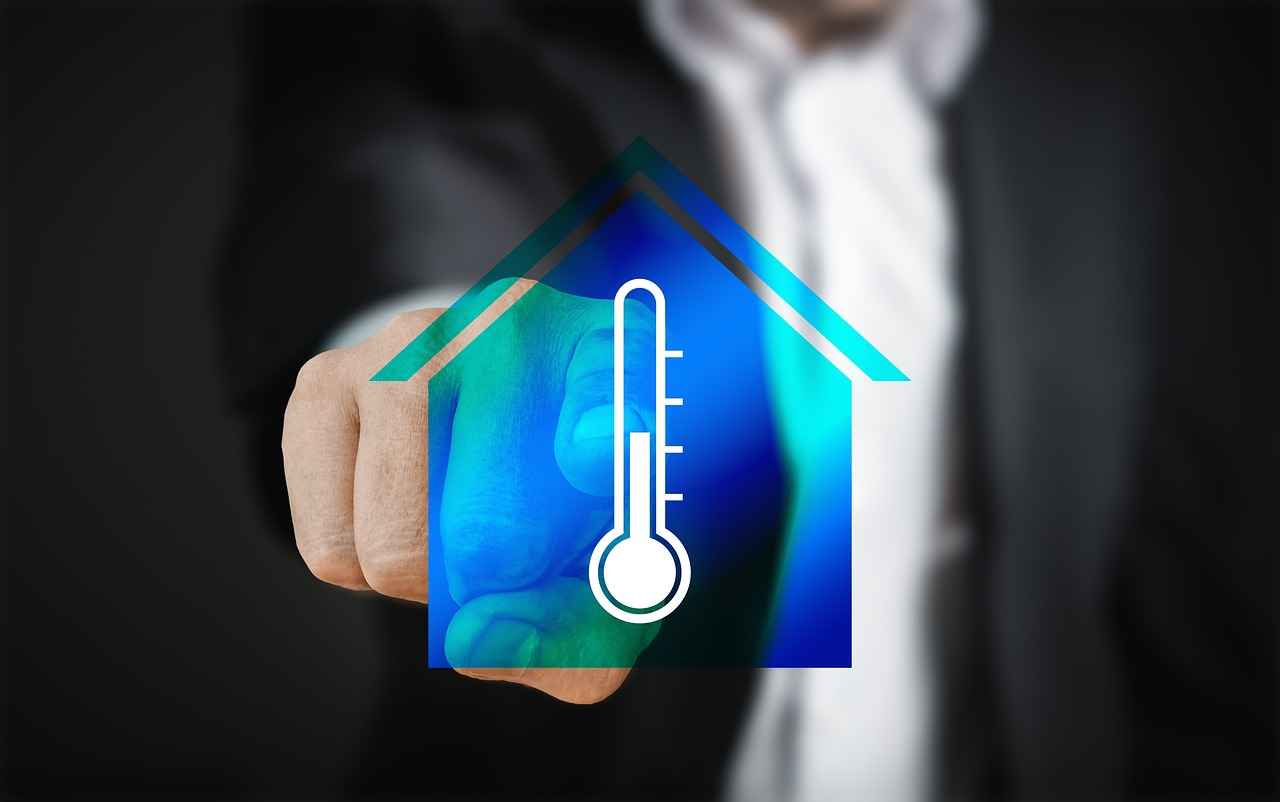
11. Smart Home Energy Management Systems
Smart Home Energy Management Systems are becoming essential tools for homeowners looking to enhance their energy efficiency and reduce costs. These systems provide valuable insights into energy consumption patterns, enabling users to make informed decisions about their energy usage.
By analyzing data collected from various devices, smart energy management systems help homeowners identify high-energy consumption appliances and suggest ways to optimize usage. This not only leads to significant cost savings but also promotes a more sustainable lifestyle.
| Feature | Description |
|---|---|
| Real-Time Monitoring | Track energy usage in real-time to identify peak consumption times and adjust habits accordingly. |
| Automated Alerts | Receive notifications for unusual energy spikes, helping to prevent unnecessary costs. |
| Energy Reports | Access detailed reports that summarize energy usage over time, highlighting trends and opportunities for savings. |
Moreover, these systems often integrate with other smart home devices, allowing for automated control of heating, cooling, and lighting based on real-time data. For instance, if the system detects that no one is home, it can automatically adjust the thermostat to save energy.
- Cost Reduction: By understanding consumption patterns, homeowners can reduce their energy bills significantly.
- Sustainability: Lower energy usage contributes to a reduced carbon footprint, benefiting the environment.
- Convenience: Easy access to energy data via smartphone apps enhances user experience and control.
In conclusion, investing in a smart home energy management system is a proactive step towards achieving energy efficiency. With the ability to monitor, analyze, and optimize energy consumption, homeowners can enjoy a more economical and eco-friendly lifestyle.
11.1 Monitoring Energy Usage
Monitoring energy usage has become an essential practice for modern homeowners aiming to enhance their energy efficiency and reduce costs. By utilizing smart home technology, homeowners can gain valuable insights into their energy consumption patterns, allowing them to identify which devices are high consumers of energy.
With the help of smart plugs and energy management systems, users can track the energy usage of individual appliances. This data enables homeowners to pinpoint energy hogs—devices that consume an excessive amount of power. For instance, an old refrigerator or a frequently used gaming console may be draining more energy than anticipated. Once these devices are identified, homeowners can take actionable steps to mitigate waste, such as:
- Replacing outdated appliances: Investing in energy-efficient models can significantly lower energy consumption.
- Adjusting usage patterns: Scheduling high-energy devices to operate during off-peak hours can lead to lower utility bills.
- Unplugging unused devices: Many electronics continue to draw power even when not in use, a phenomenon known as phantom load.
Additionally, regular monitoring can help homeowners track the effectiveness of these strategies over time. Many smart energy management systems provide monthly reports that highlight usage trends, making it easier to see the impact of any changes made. This not only leads to cost savings but also contributes to a more sustainable lifestyle by reducing overall energy consumption.
In conclusion, actively monitoring energy usage empowers homeowners to make informed decisions about their energy consumption. By identifying high-consumption devices and implementing effective strategies to reduce energy waste, homeowners can achieve significant cost savings while promoting a more energy-efficient home.
11.2 Benefits of Energy Reports
In today’s world, where energy efficiency is paramount, regular energy reports play a crucial role in helping homeowners manage their energy consumption effectively. These reports provide detailed insights into energy usage patterns, enabling homeowners to make informed decisions about their energy efficiency upgrades and behavioral changes.
One of the primary benefits of energy reports is that they highlight consumption trends. By analyzing usage data over time, homeowners can identify which appliances or areas of their home are consuming the most energy. This knowledge empowers them to make targeted adjustments, such as upgrading to energy-efficient appliances or modifying their daily habits to reduce waste.
Moreover, energy reports can help homeowners understand the impact of seasonal changes on their energy usage. For instance, during winter months, heating costs may spike, prompting homeowners to consider insulation improvements or smarter thermostat settings. By recognizing these trends, homeowners can proactively implement changes that lead to significant cost savings.
Another significant advantage of energy reports is their role in fostering environmental awareness. As homeowners become more conscious of their energy consumption, they are likely to adopt more sustainable practices, such as using renewable energy sources or participating in local energy-saving programs. This shift not only reduces energy bills but also contributes to a greener planet.
Furthermore, energy reports can serve as a valuable tool when it comes to budgeting and financial planning. With a clear understanding of energy costs, homeowners can allocate their budgets more effectively, ensuring they are prepared for fluctuations in energy prices. This financial foresight can lead to better overall household management.
In conclusion, regular energy reports offer homeowners a wealth of information that can lead to improved energy efficiency, cost savings, and a greater commitment to sustainability. By leveraging these insights, homeowners can make strategic decisions that not only benefit their wallets but also the environment.

12. Conclusion: Embracing Smart Home Technology
Conclusion: Embracing Smart Home Technology
In today’s fast-paced world, embracing smart home technology is not just a trend but a necessity for new homeowners. This technology significantly enhances convenience, security, and energy efficiency, transforming how we interact with our living spaces. By selecting the right devices, you can create a connected and efficient living environment tailored to your specific needs.
Smart home devices offer a plethora of benefits. For instance, smart thermostats allow you to control your home’s temperature remotely, learning your habits to optimize energy use and reduce bills. Meanwhile, smart security cameras provide peace of mind through real-time monitoring and alerts, ensuring your home remains safe even when you’re away.
Another essential component is smart lighting solutions, which not only enhance ambiance but also contribute to energy savings. By automating your lighting schedules, you can deter intruders and create a welcoming environment without lifting a finger.
Moreover, smart door locks and smart plugs simplify everyday tasks. With keyless entry options and remote locking capabilities, you can manage access to your home effortlessly. Smart plugs allow you to control appliances from your smartphone, enabling energy monitoring and scheduling.
As you explore the world of smart home technology, consider investing in a smart home hub, which centralizes control of all your devices, enhancing compatibility and user experience. Additionally, smart smoke and carbon monoxide detectors offer crucial safety features, sending alerts directly to your phone in case of emergencies.
In conclusion, integrating smart home technology into your new home is an investment in comfort, safety, and efficiency. By making informed choices about the devices you select, you can create a modern living space that meets your needs and adapts to your lifestyle.
Frequently Asked Questions
- What are the benefits of using smart home devices?
Smart home devices enhance your lifestyle by providing convenience, improving security, and increasing energy efficiency. They allow you to control various aspects of your home from anywhere, ensuring peace of mind and saving on energy costs.
- How do smart thermostats work?
Smart thermostats learn your heating and cooling preferences over time. They adjust temperatures based on your schedule and can be controlled remotely via smartphone apps, helping you save on energy bills while keeping your home comfortable.
- Can smart security cameras be integrated with other smart devices?
Absolutely! Many smart security cameras can easily integrate with other smart home devices, allowing you to monitor and control everything from one central app, enhancing your overall home automation experience.
- What features should I look for in smart door locks?
When choosing smart door locks, consider features like keyless entry, remote locking and unlocking, and customizable access codes. These features enhance security and provide convenience for managing access to your home.
- Do smart appliances really save energy?
Yes! Smart appliances are designed to optimize energy usage, often providing insights into consumption patterns. This helps you make informed decisions, ultimately leading to reduced energy bills and a more sustainable home.

